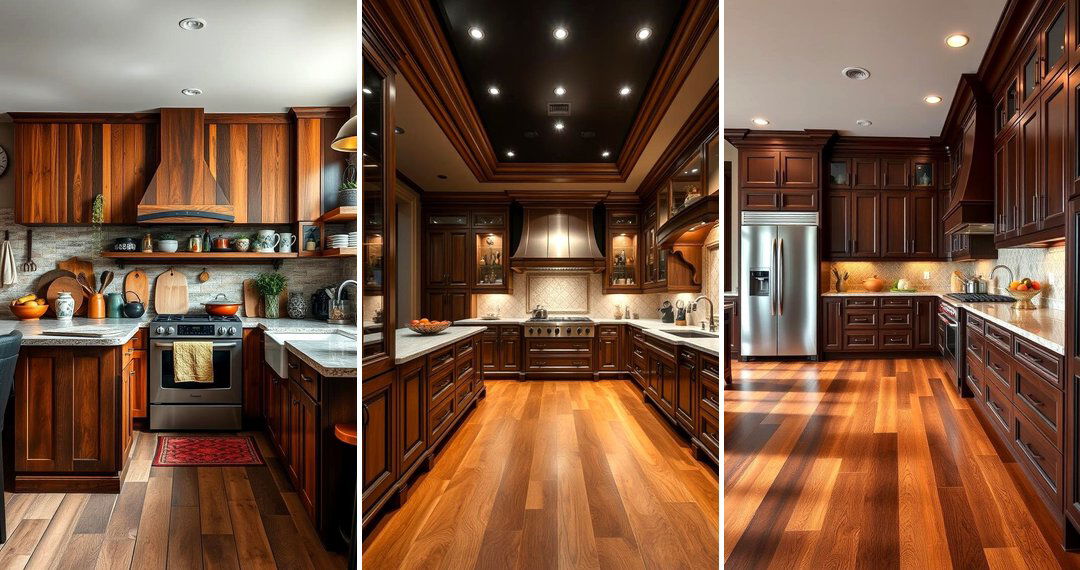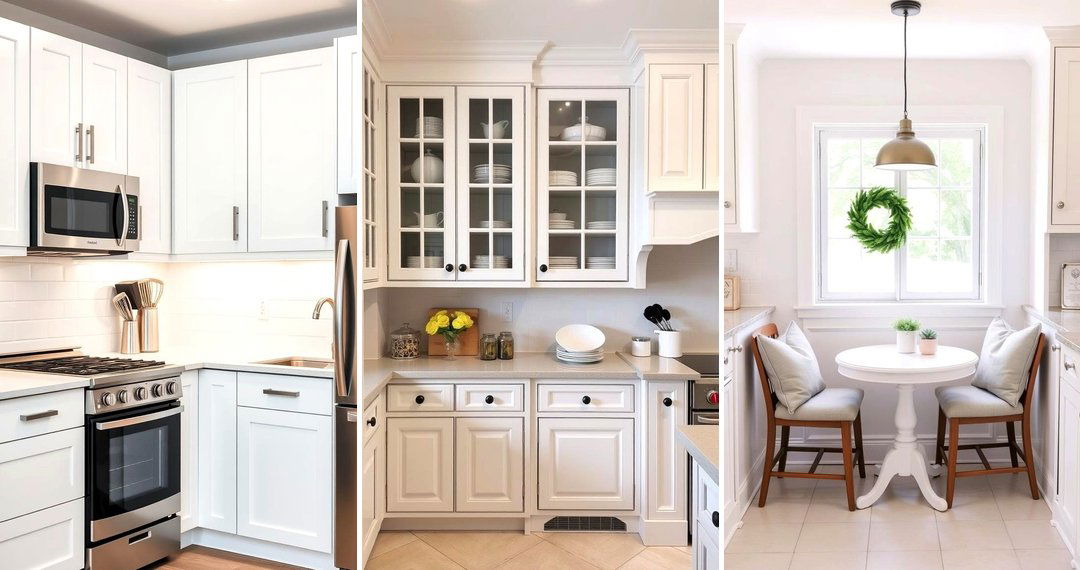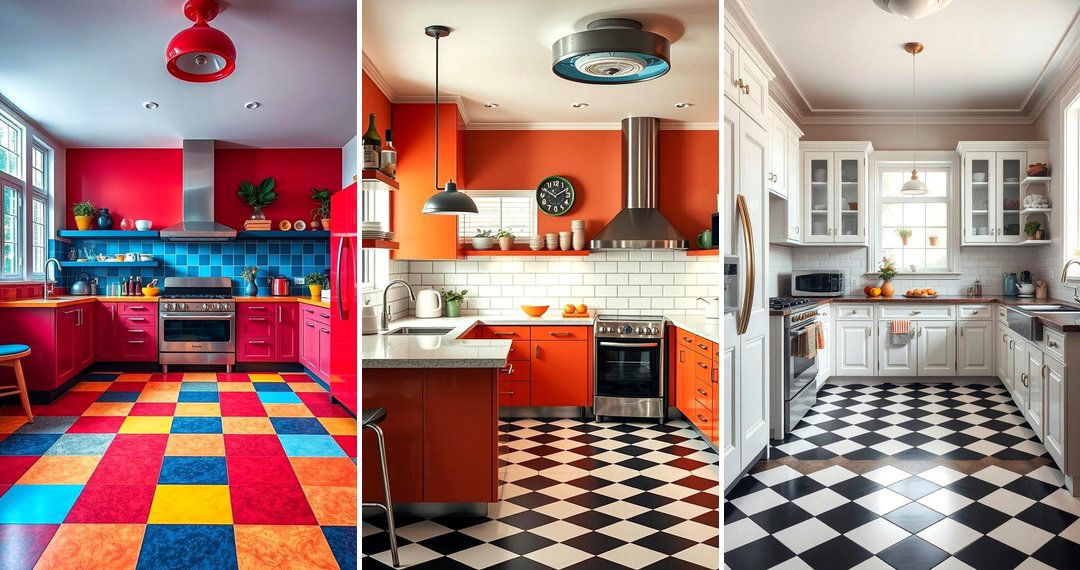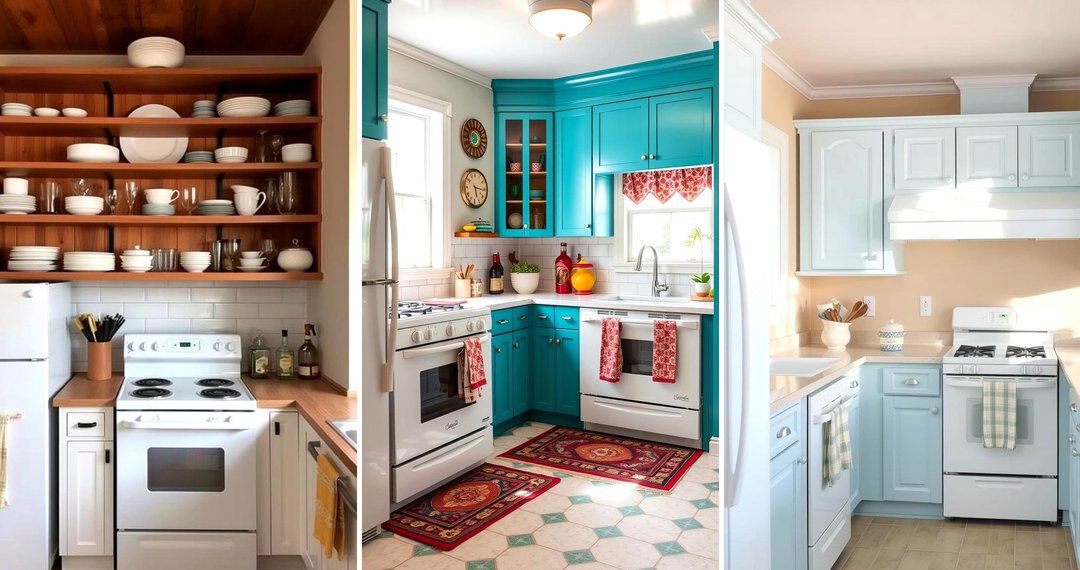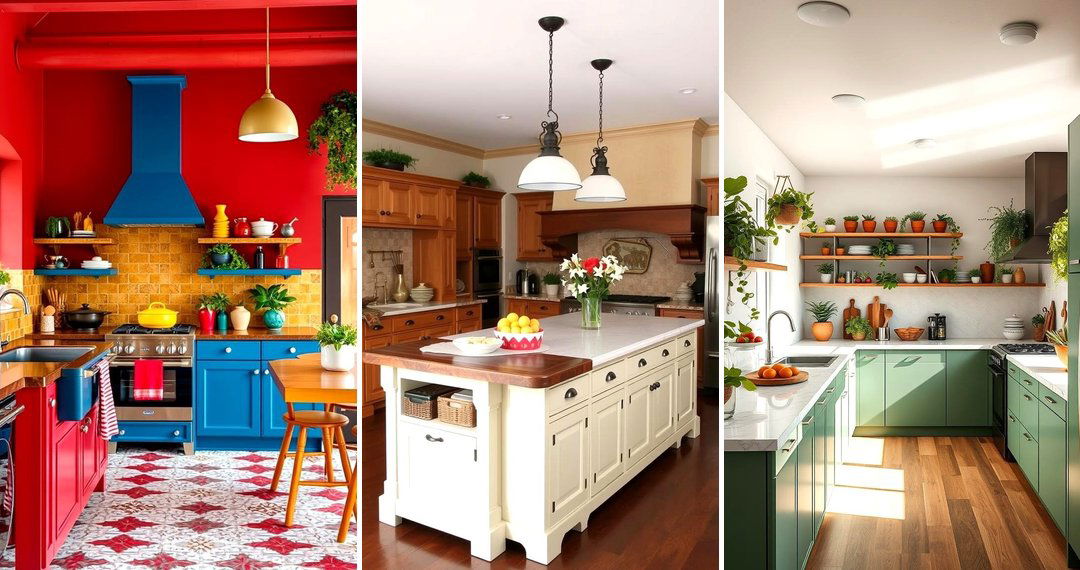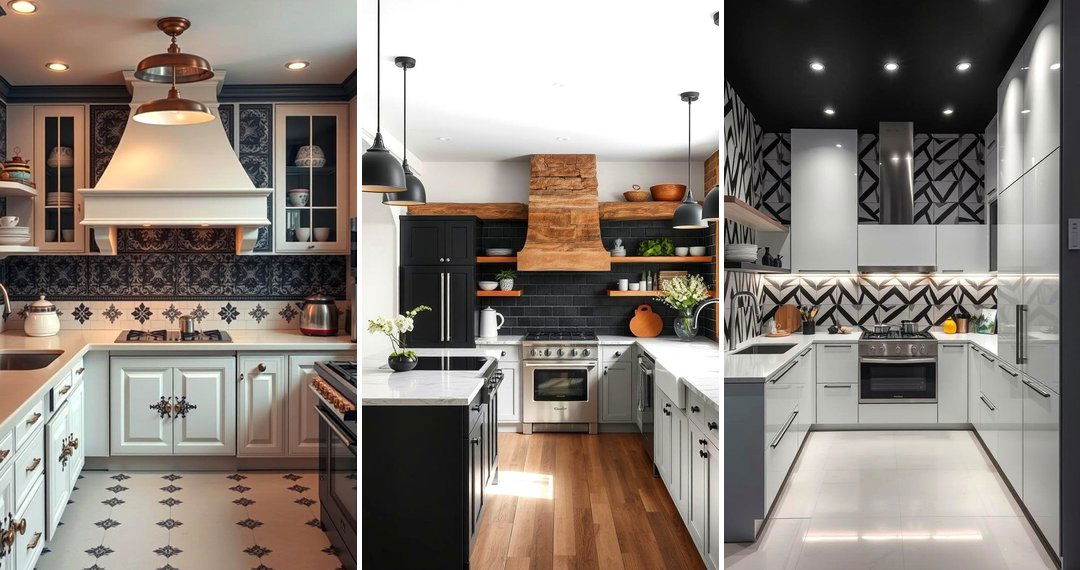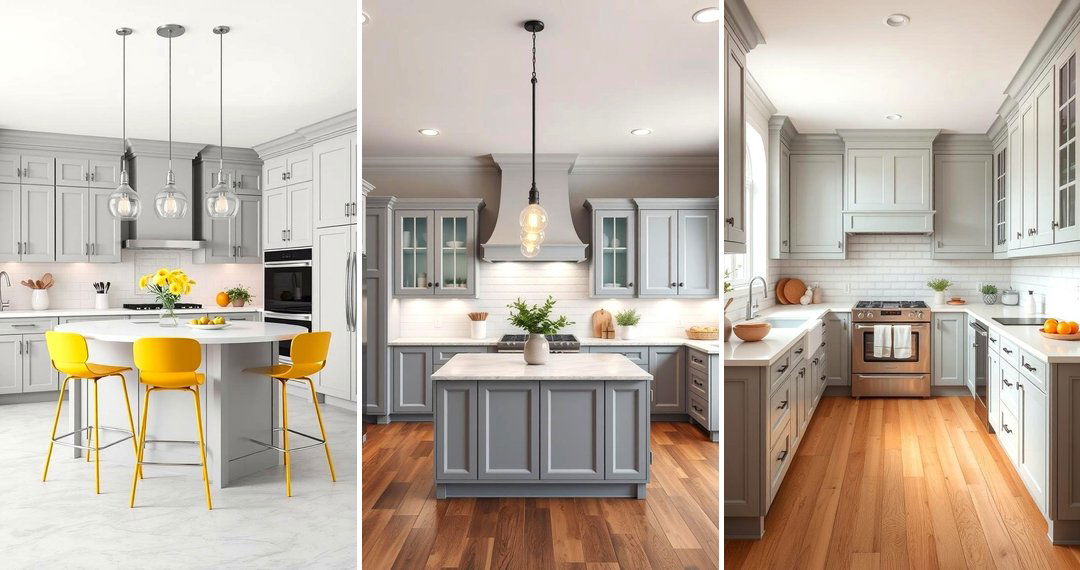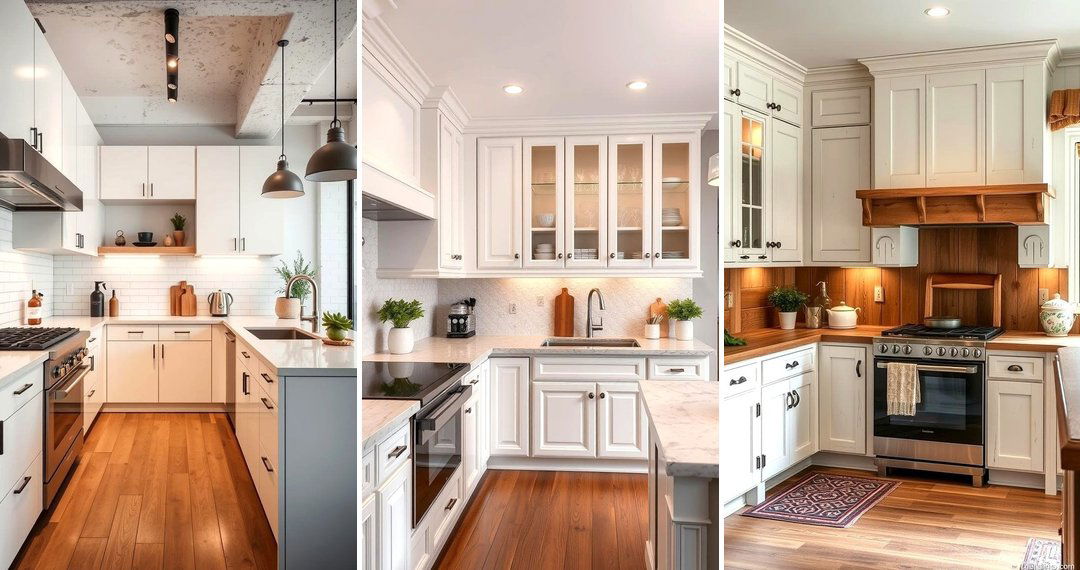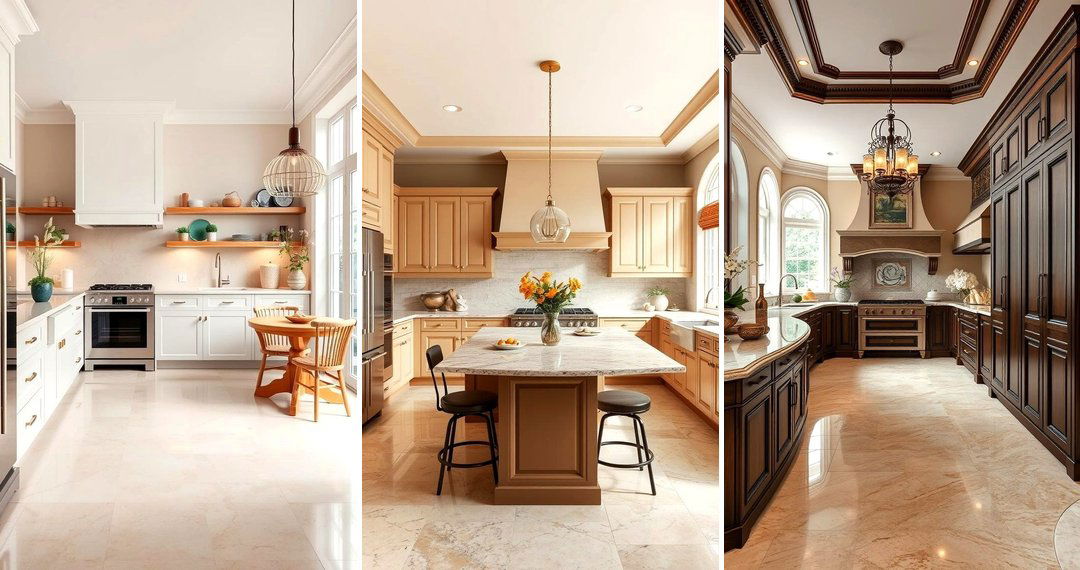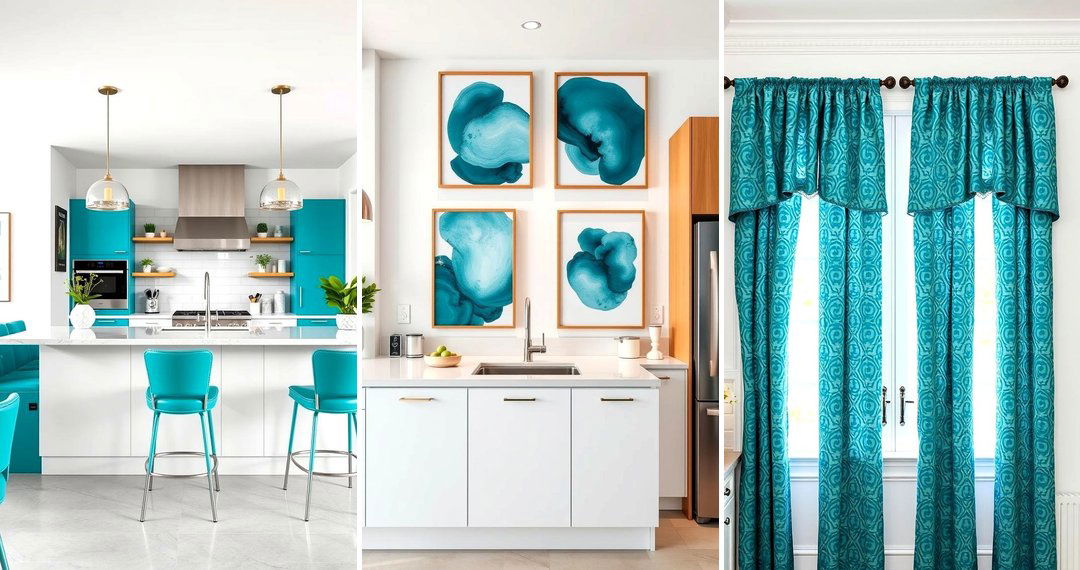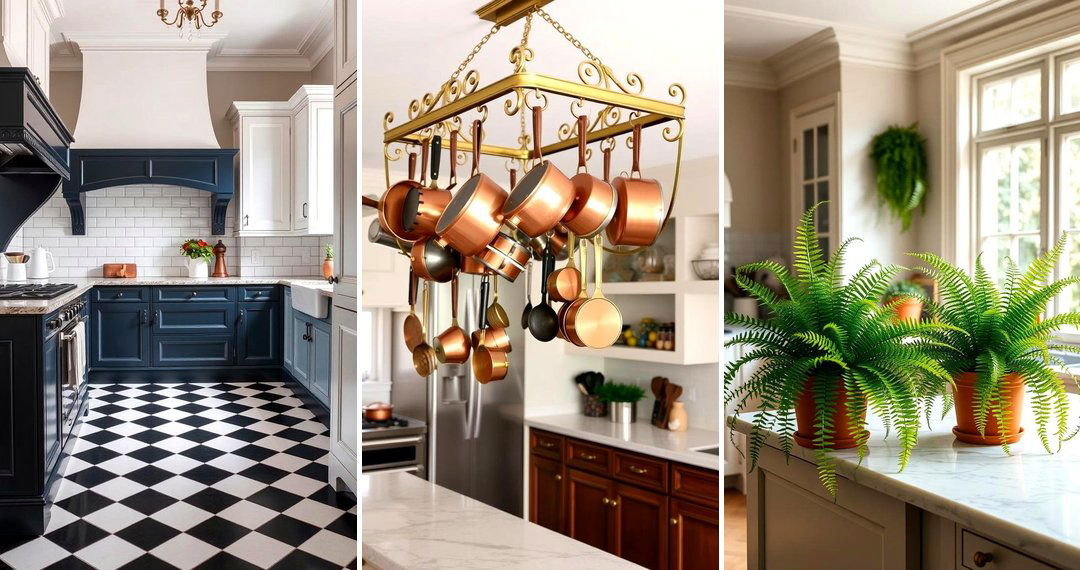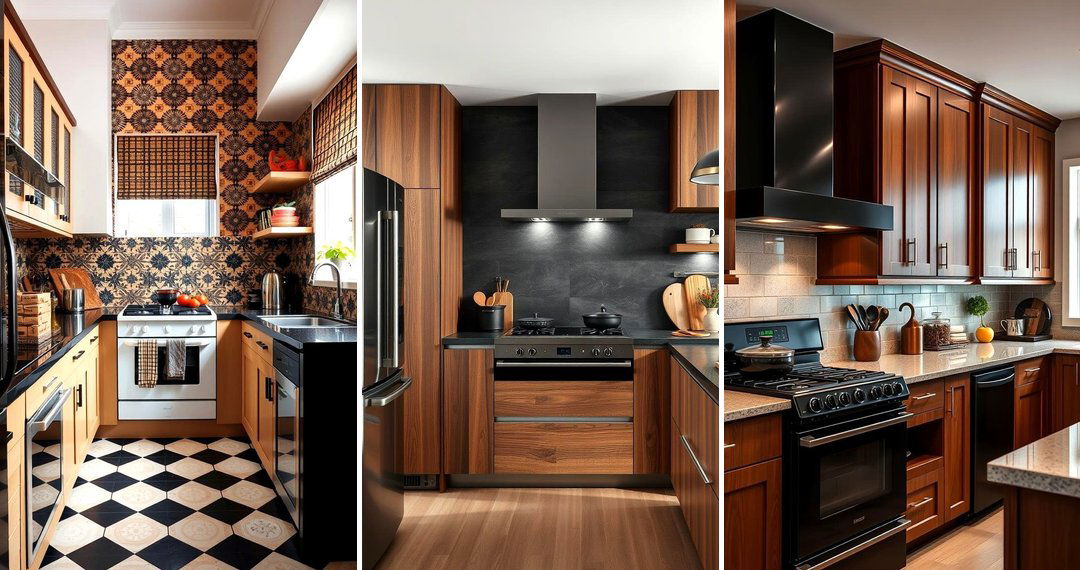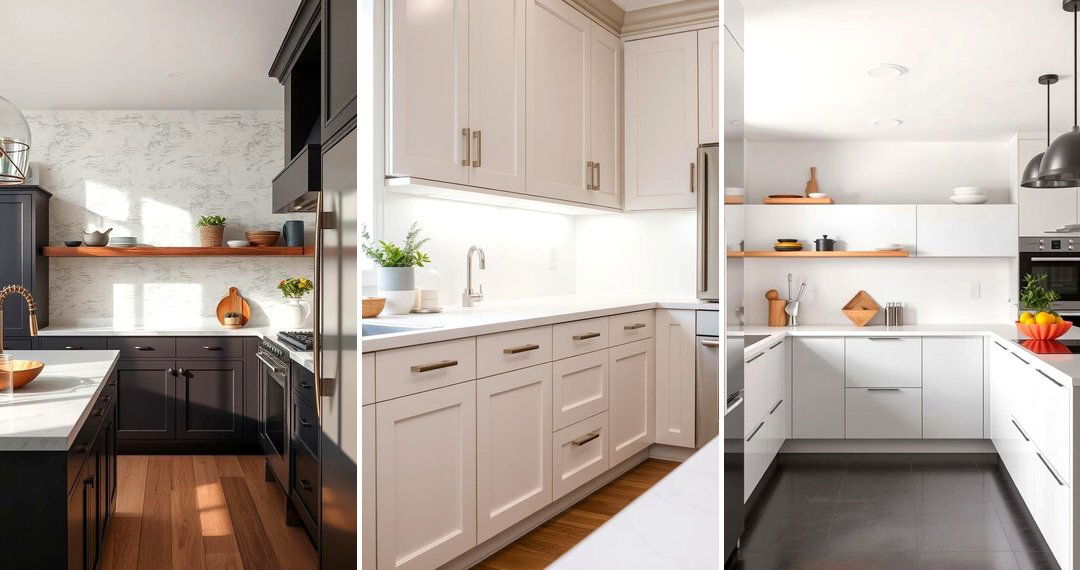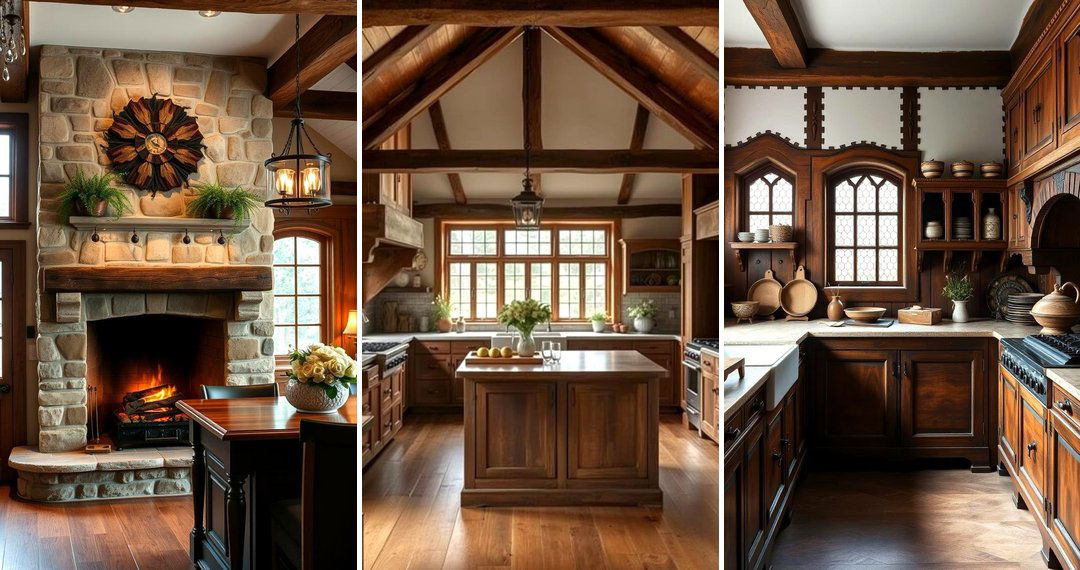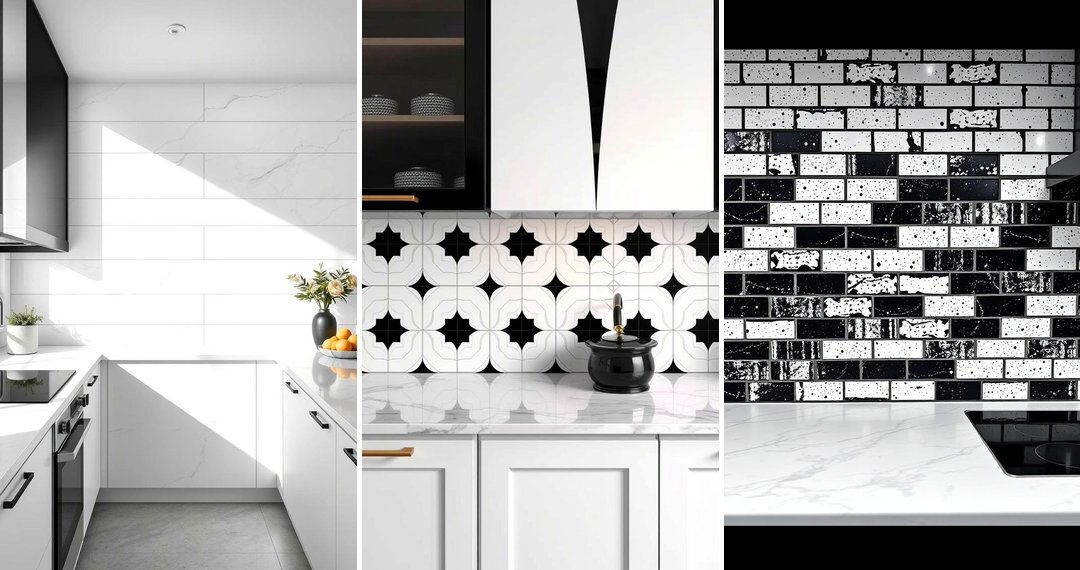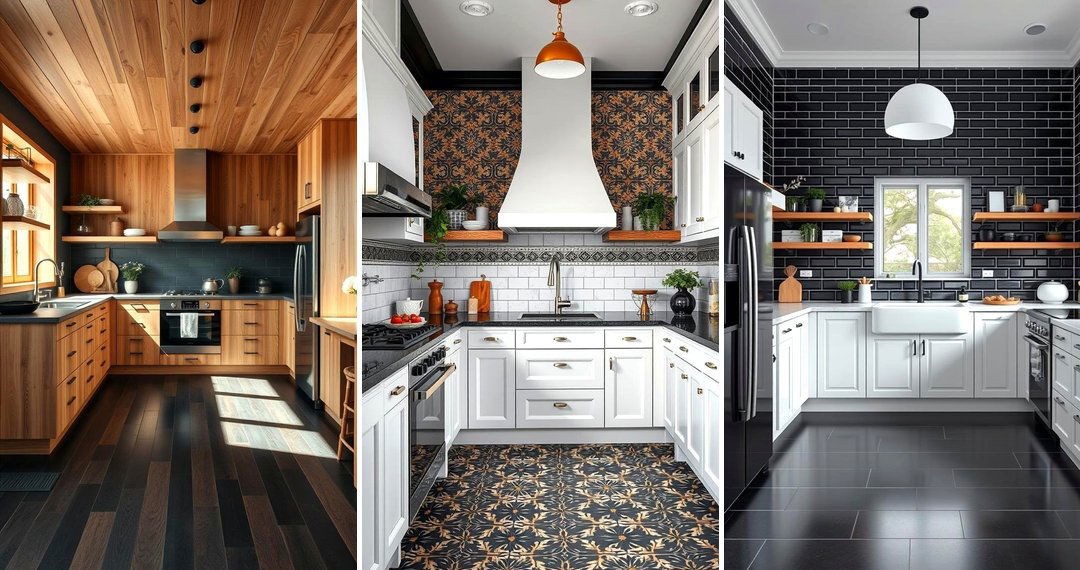In the heart of every home lies the kitchen, a space where memories are cooked alongside meals. The allure of a traditional kitchen lies in its timeless elegance, a comforting blend of classic design and practical functionality. These kitchens evoke a sense of warmth and familiarity, often featuring natural materials, comfortable layouts, and a touch of decorative charm. For those seeking a kitchen that feels both sophisticated and inviting, exploring traditional design elements offers a wealth of inspiration. Let's delve into a collection of ideas that capture the enduring appeal of traditional kitchens and discover how these elements can transform your own culinary space.
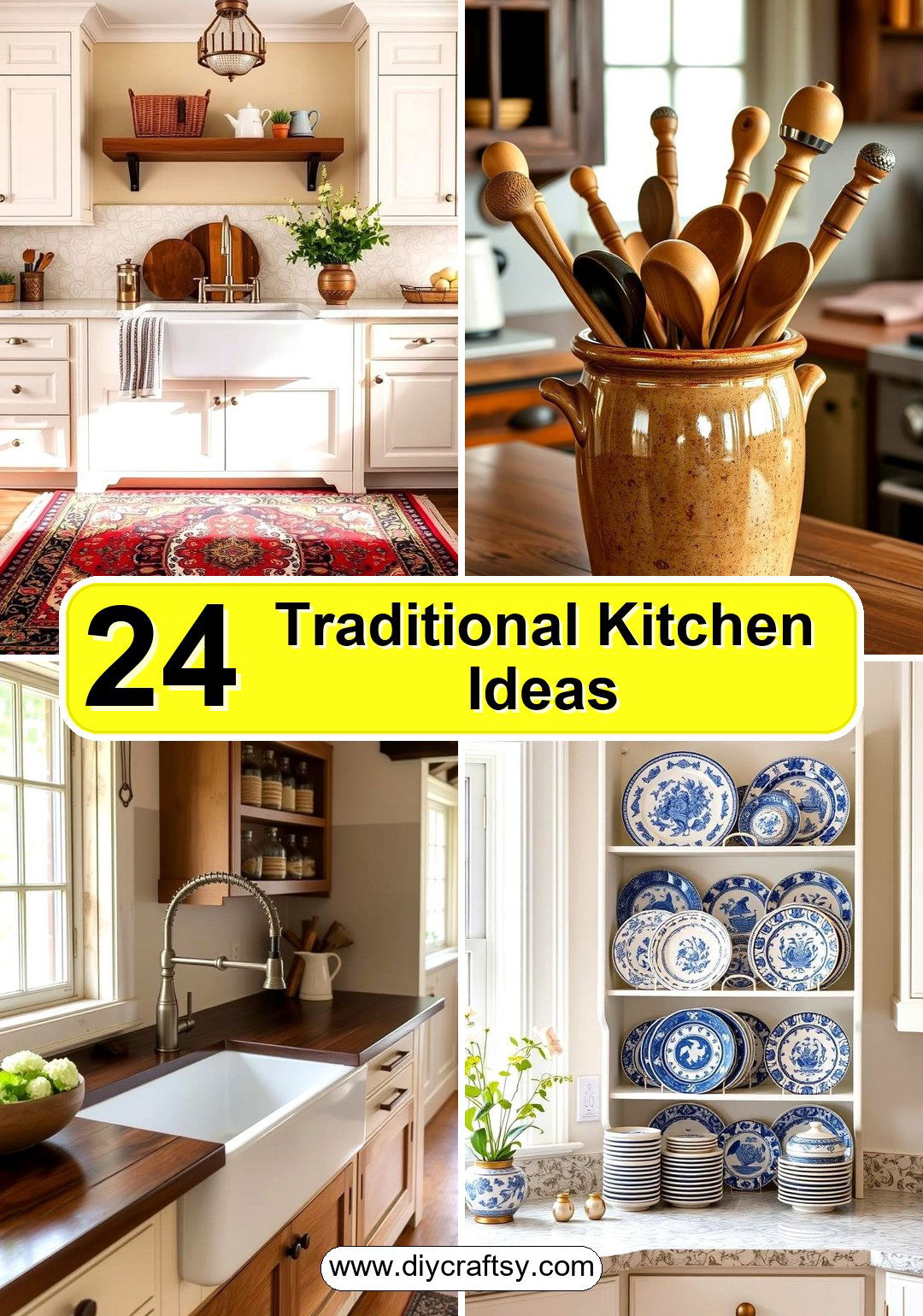
1. Classic White Cabinets
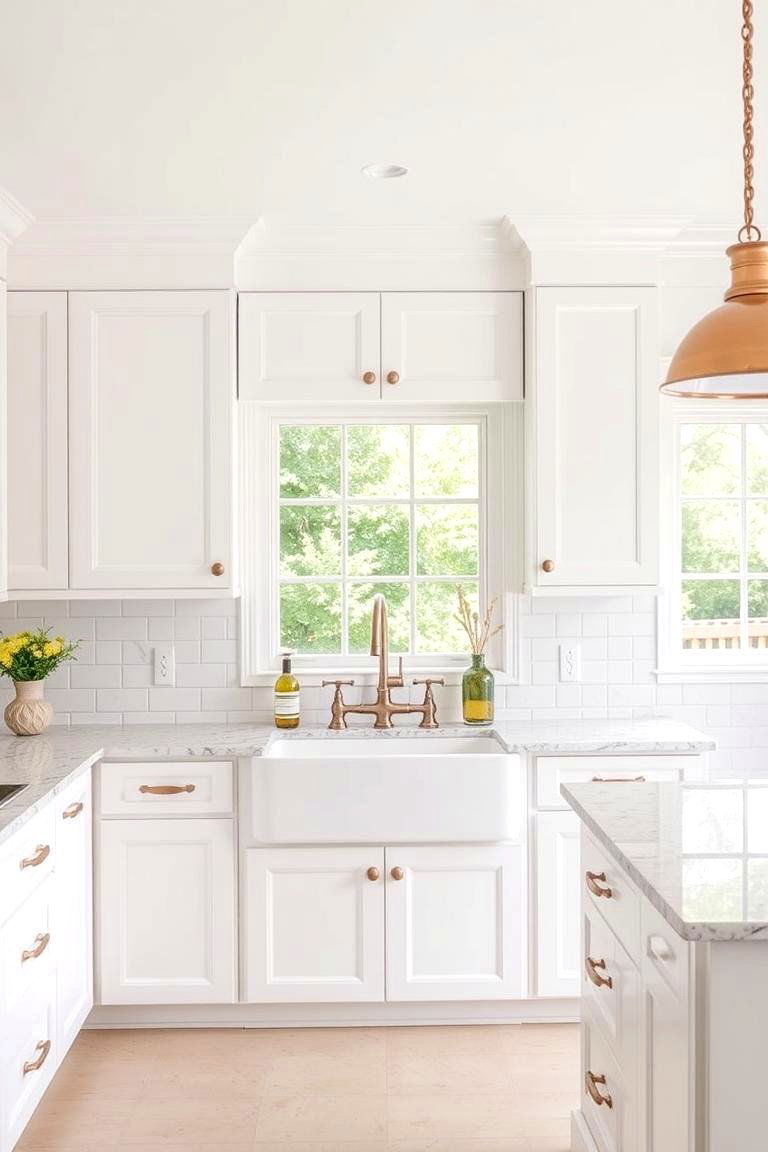
The cornerstone of many traditional kitchens is the timeless appeal of classic white cabinetry. These cabinets offer a bright and airy feel, providing a versatile backdrop for various design accents and color schemes. Their inherent simplicity allows for easy integration with different countertop materials, backsplash designs, and hardware finishes. Furthermore, white cabinets possess a remarkable ability to reflect light, making even smaller kitchens appear more spacious and welcoming. Their enduring popularity speaks to their adaptability and ability to create a clean, sophisticated, and perennially stylish kitchen environment that homeowners cherish for years to come.
2. Shaker-Style Doors
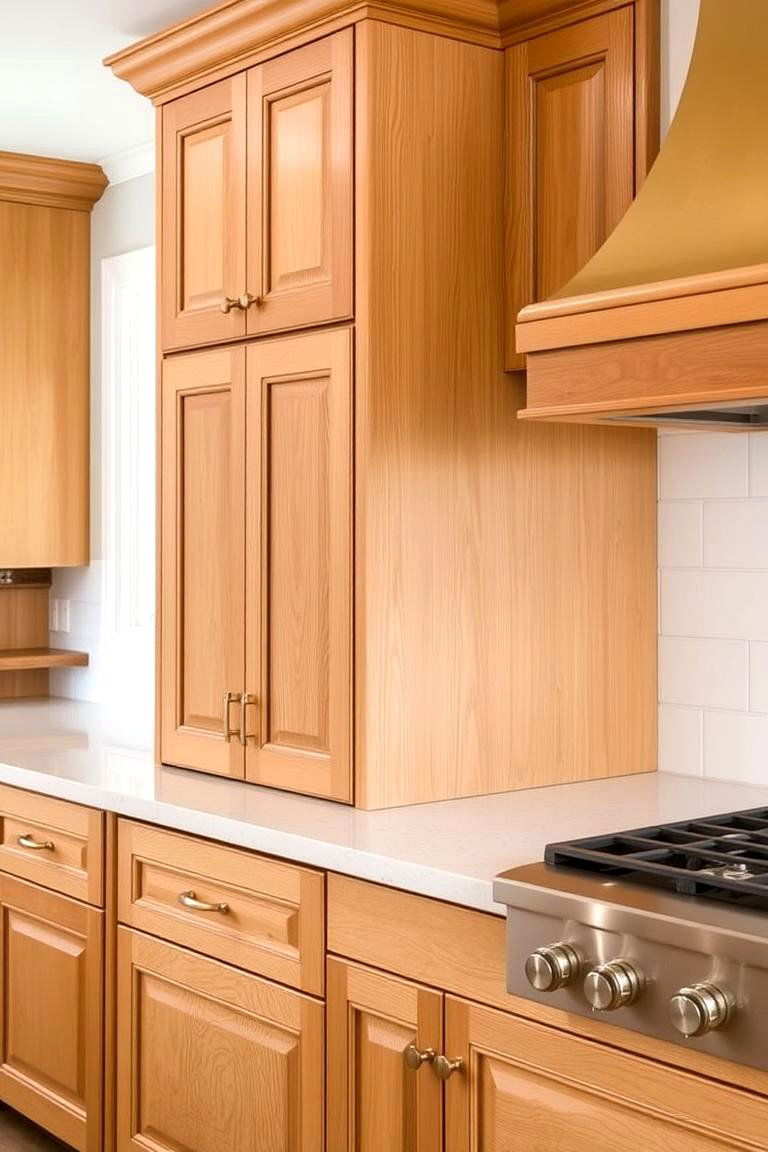
With their clean lines and understated elegance, Shaker-style cabinet doors are a hallmark of traditional kitchen design. Their simple, framed construction offers a sense of craftsmanship and durability without appearing overly ornate. This versatile style complements a wide range of traditional aesthetics, from country charm to more formal settings. Moreover, the flat center panel of Shaker doors makes them easy to clean and maintain, a practical benefit for busy kitchens. Their enduring appeal lies in their ability to blend seamlessly with various hardware choices and countertop materials, making them a popular and reliable choice for homeowners seeking a timeless and functional kitchen.
3. Farmhouse Sink
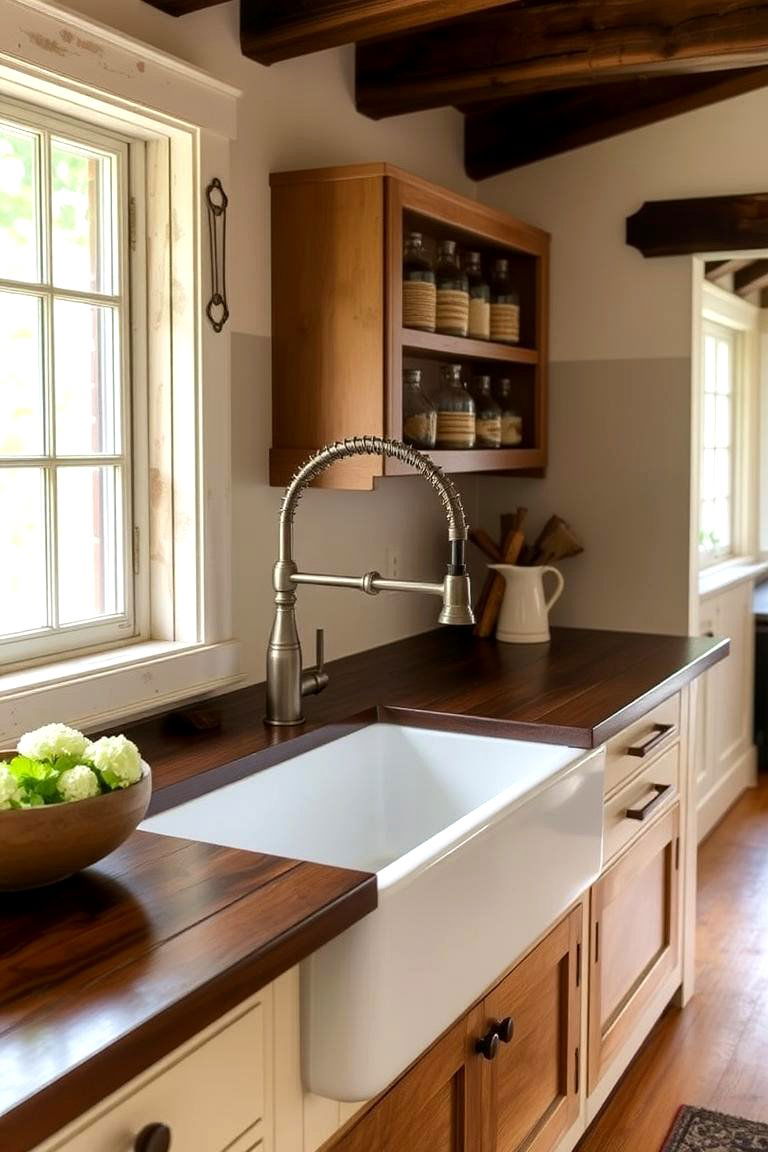
Evoking a sense of rustic charm and practicality, the farmhouse sink is a beloved feature in traditional kitchens. Characterized by its exposed front apron, this sink style offers a deep basin that can accommodate large pots and pans with ease. Often crafted from durable materials like fireclay or cast iron, farmhouse sinks are built to withstand the rigors of daily use. Beyond their functional benefits, they add a focal point to the kitchen, lending a touch of vintage appeal and warmth to the overall design. The substantial presence of a farmhouse sink contributes to the inviting and homey atmosphere that defines a classic traditional kitchen.
4. Hardwood Flooring
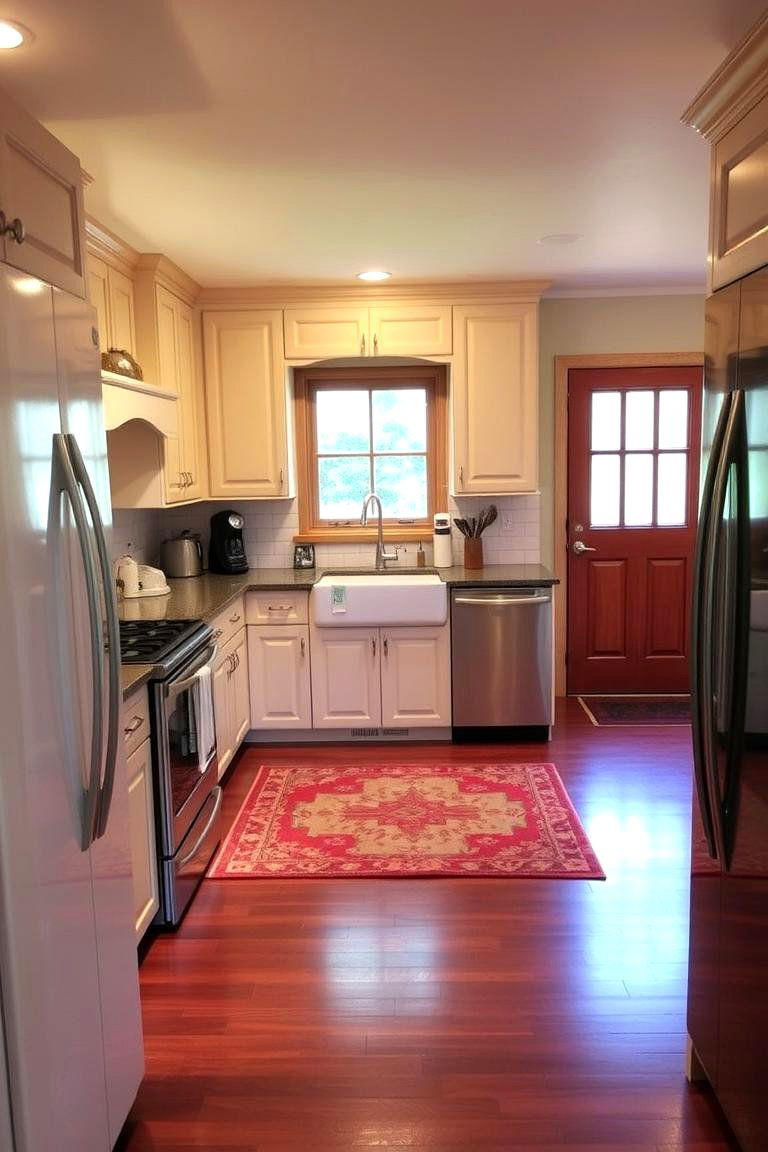
For a foundation that exudes warmth and timeless beauty, hardwood flooring is an excellent choice for traditional kitchens. The natural grain and rich tones of wood add an element of sophistication and comfort underfoot. Unlike some other flooring options, hardwood can be refinished over time, ensuring its longevity and allowing for updates to the kitchen's aesthetic. Furthermore, it offers a classic and versatile look that complements a wide array of cabinet styles and color palettes. The inherent durability and enduring style of hardwood flooring make it a practical and aesthetically pleasing choice for creating a welcoming traditional kitchen space.
5. Granite Countertops
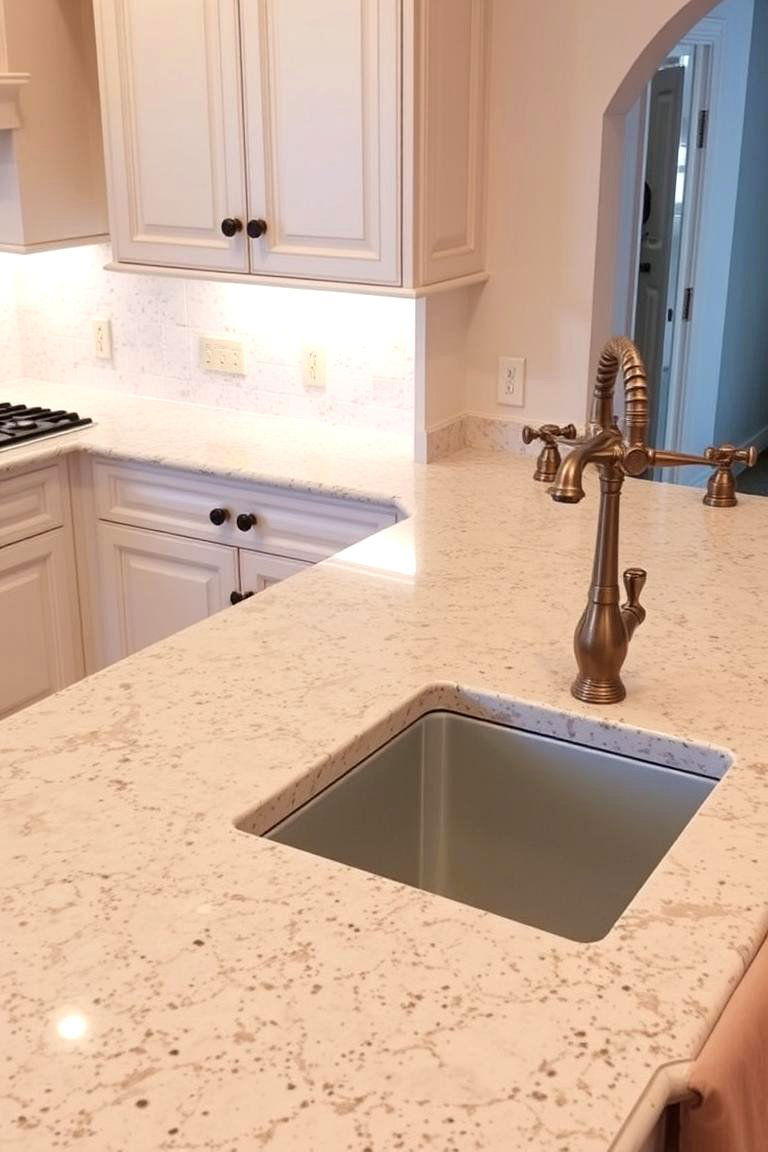
A popular and practical choice for traditional kitchens, granite countertops offer a blend of durability and natural beauty. Each slab of granite is unique, featuring variations in color and pattern that add character and visual interest to the kitchen. Known for their resistance to heat, scratches, and stains, granite countertops are well-suited to the demands of a busy culinary environment. Their polished surface provides a sophisticated look that complements both light and dark cabinetry. Investing in granite countertops not only enhances the aesthetic appeal of a traditional kitchen but also adds long-term value to the home.
6. Subway Tile Backsplash
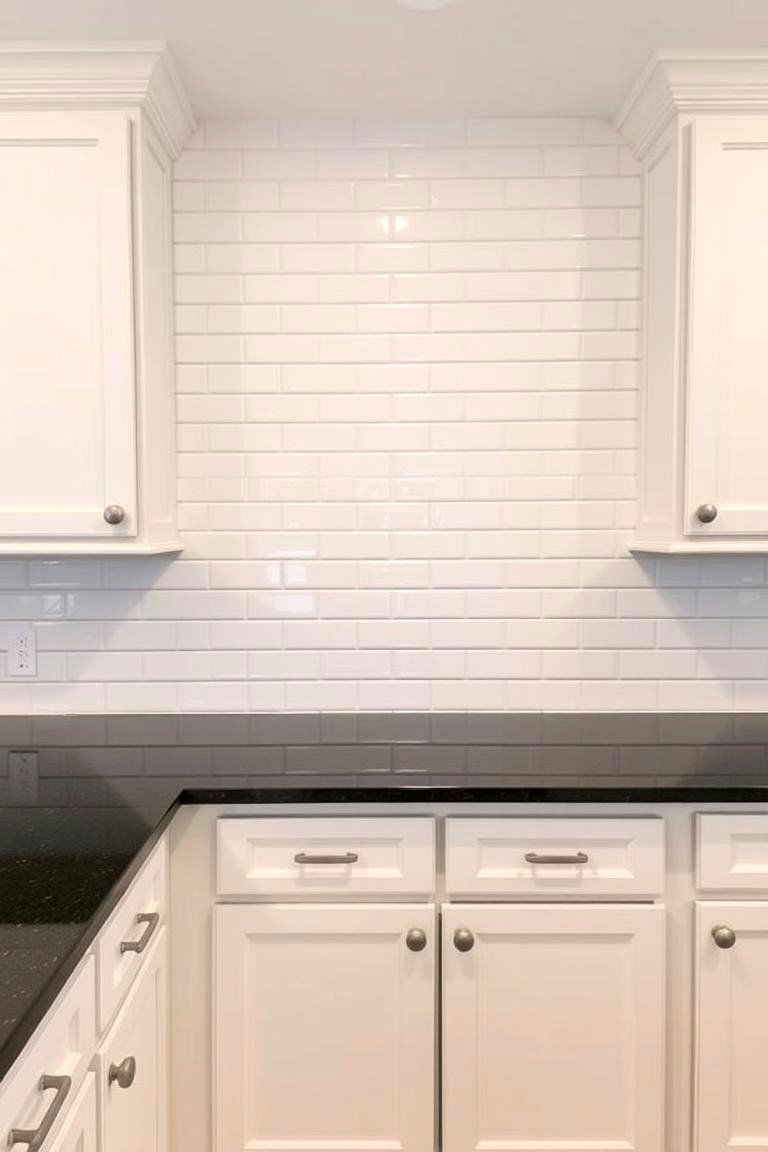
Simple yet iconic, the subway tile backsplash is a quintessential element of traditional kitchen design. These rectangular ceramic tiles, typically arranged in a horizontal running bond pattern, offer a clean and classic look that has stood the test of time. Their glossy surface is easy to clean and reflects light, brightening the workspace. While white subway tiles are the most traditional choice, they can also be found in various colors and finishes to suit different design preferences. The versatility and timeless appeal of subway tile make it a reliable and stylish option for adding a touch of classic elegance to any traditional kitchen.
7. Open Shelving
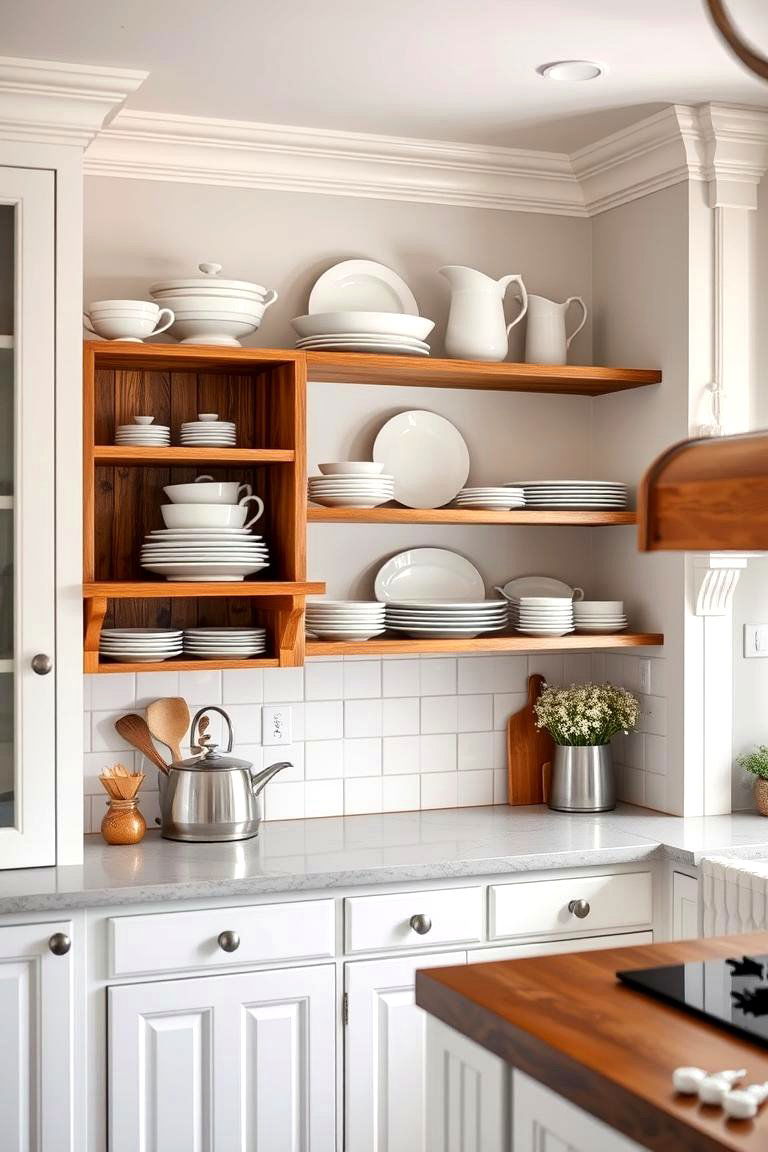
Introducing an element of visual interest and accessibility, open shelving can be a charming addition to a traditional kitchen. Strategically placed shelves provide an opportunity to display decorative dishware, glassware, and other kitchen essentials, adding a personal touch to the space. While offering easy access to frequently used items, open shelving also encourages a more organized approach to storage. When styled thoughtfully, these shelves can enhance the overall aesthetic of a traditional kitchen, adding warmth and personality without feeling cluttered. Consider incorporating open shelving alongside traditional cabinetry for a balanced and inviting look.
8. Kitchen Island with Seating
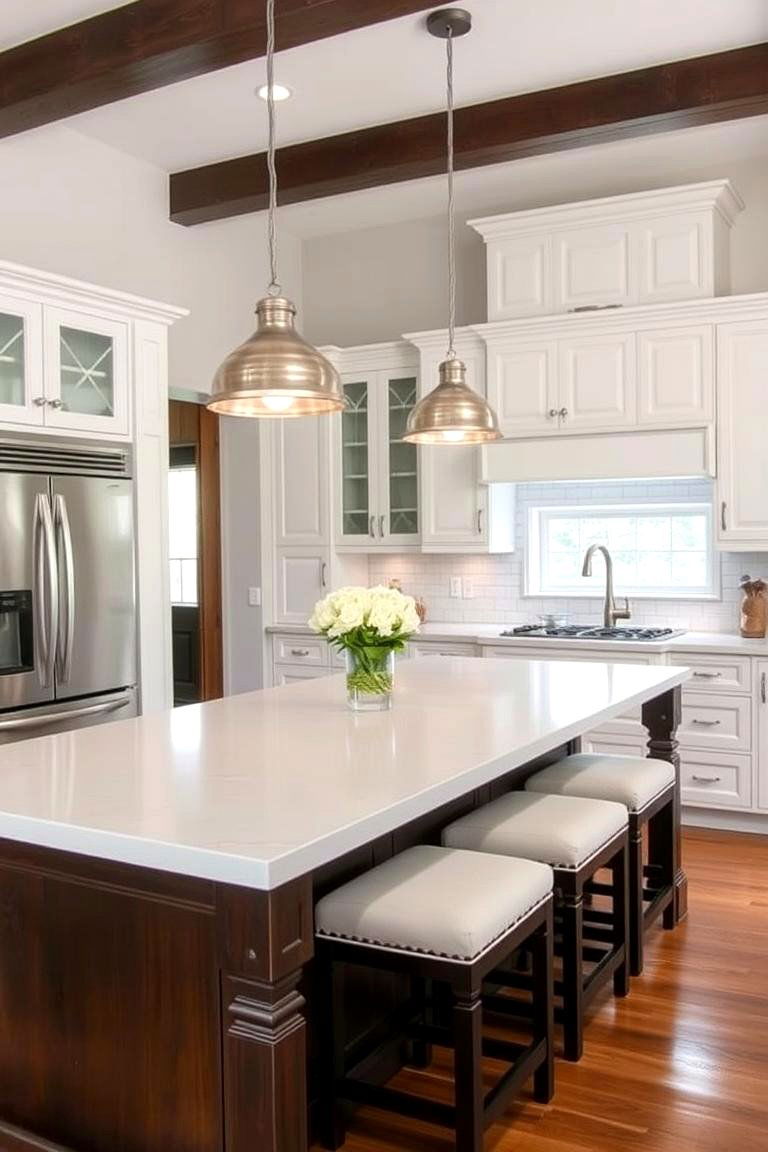
Consider the functionality and social aspect that a kitchen island with seating can bring to a traditional kitchen. This central feature provides valuable extra workspace for food preparation, serving, and even casual dining. The addition of bar stools or chairs transforms the island into a gathering spot for family and friends. Often featuring storage solutions like drawers and cabinets, a kitchen island can also help to maximize efficiency and organization within the space. Whether used for a quick breakfast or as a hub for conversation, a well-designed kitchen island enhances both the practicality and the inviting atmosphere of a traditional kitchen.
9. Pendant Lighting
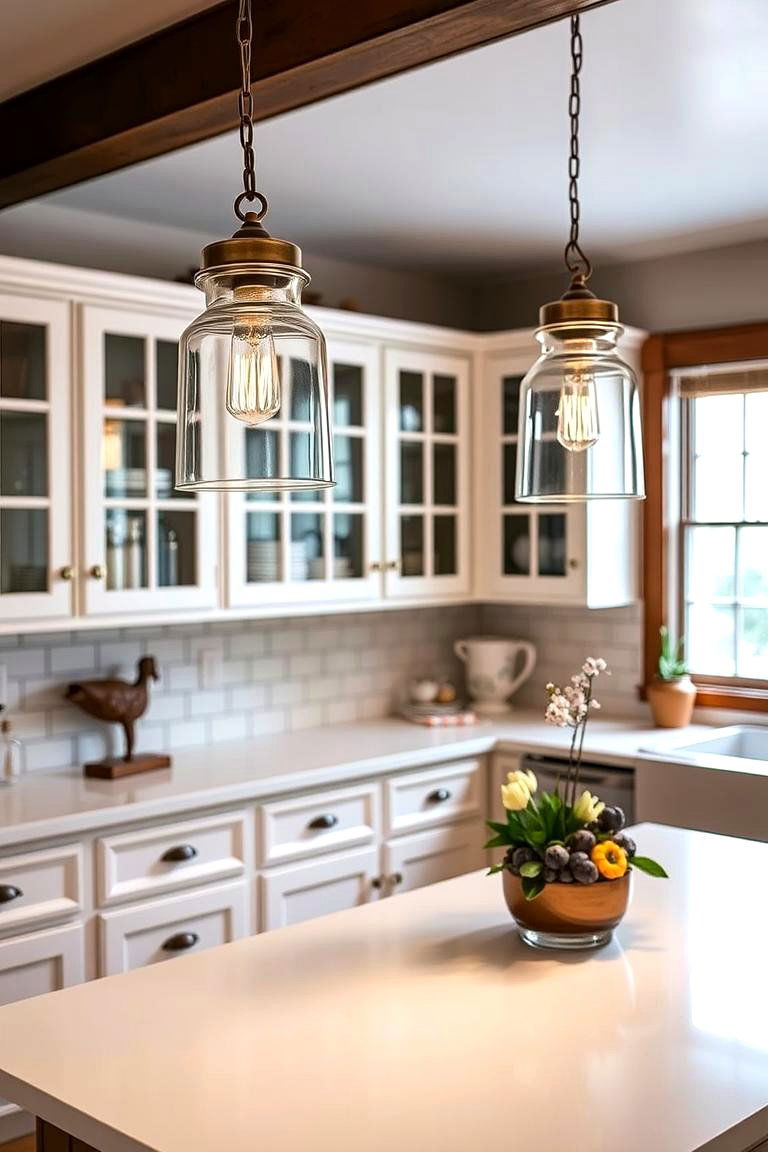
With the ability to add both task lighting and decorative flair, pendant lights are a popular choice for illuminating traditional kitchens. Hung individually or in clusters over islands or sinks, these fixtures can define specific areas within the kitchen while contributing to the overall aesthetic. Opting for pendant lights with classic shapes, such as bell jars or lanterns, can further enhance the traditional feel. The warm glow cast by pendant lighting creates an inviting ambiance, making the kitchen a more comfortable and functional space for cooking, dining, and socializing. Thoughtfully chosen pendant lights serve as both practical light sources and stylish design elements in a traditional kitchen.
10. Traditional Faucet
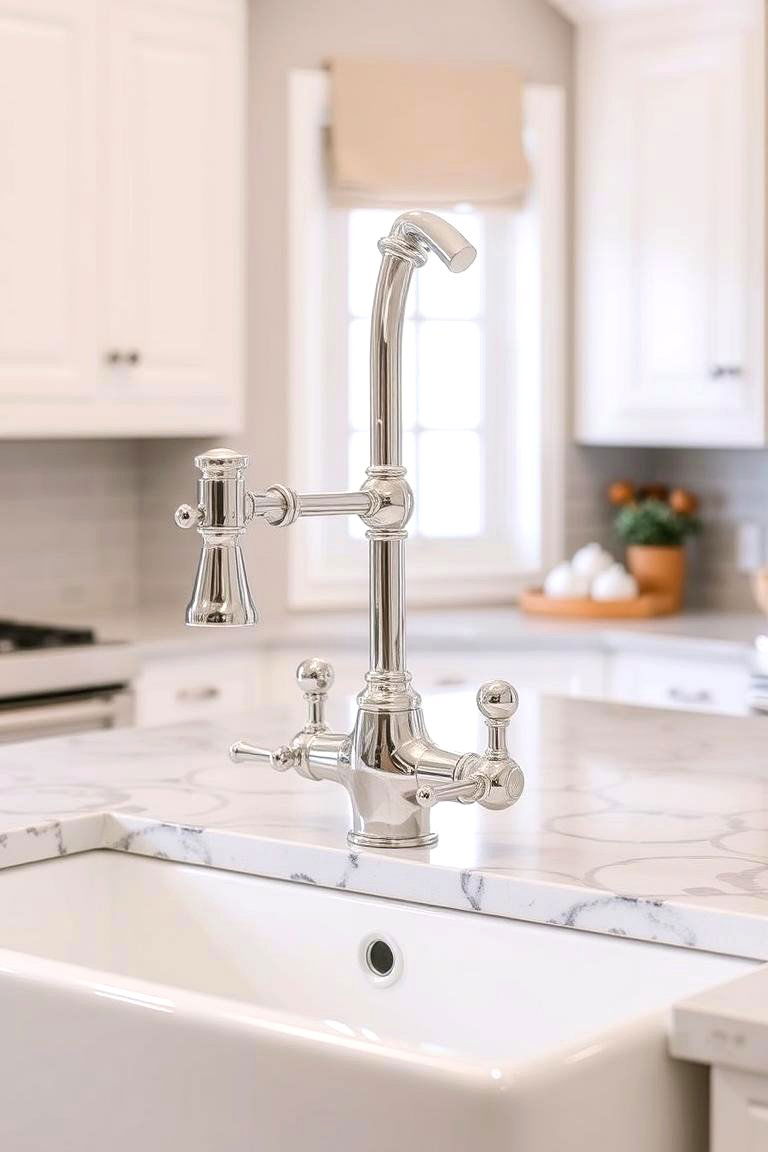
A detail that can significantly impact the overall look and feel of a traditional kitchen is the choice of faucet. Opting for a traditional-style faucet with elegant curves, a polished finish (such as chrome, brushed nickel, or oil-rubbed bronze), and perhaps a bridge or gooseneck spout can enhance the classic aesthetic. Beyond its visual appeal, a high-quality traditional faucet should also be functional and durable. Features like a pull-down sprayer or a separate side spray can add convenience to daily tasks. Selecting a traditional faucet that balances both form and function is key to completing the timeless look of a traditional kitchen.
11. Crown Molding
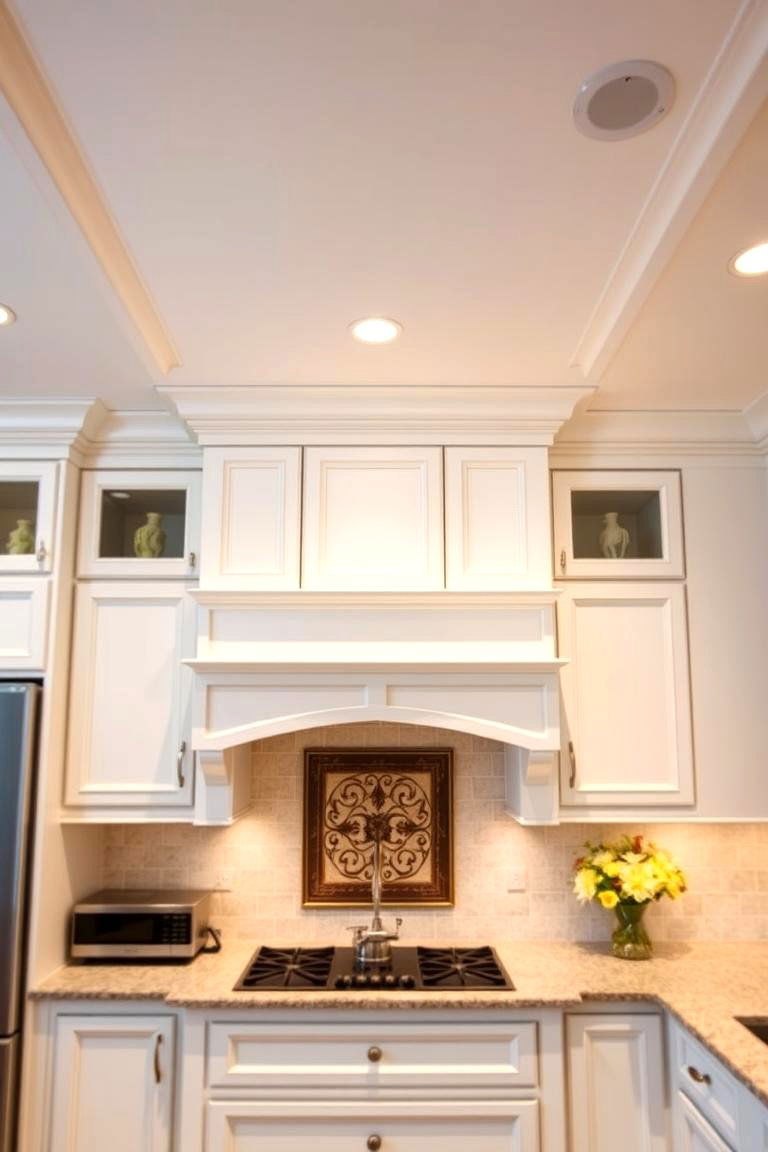
To add a touch of architectural detail and refinement, consider incorporating crown molding into a traditional kitchen design. This decorative trim, installed at the junction of the walls and ceiling, creates a sense of formality and elegance. Crown molding can visually elevate the space, making it feel more finished and polished. It also serves to seamlessly integrate cabinetry with the ceiling, creating a cohesive and sophisticated look. The addition of crown molding is a subtle yet impactful way to enhance the traditional character and overall aesthetic appeal of a kitchen.
12. Wainscoting
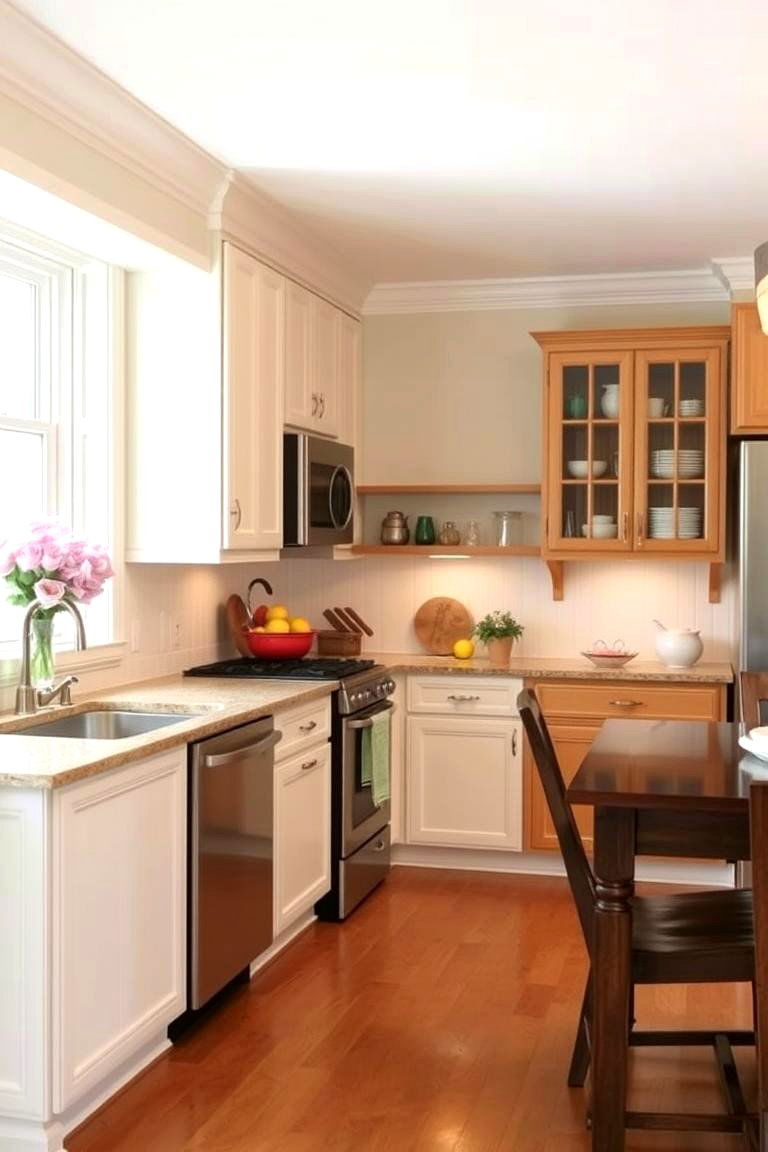
Another classic architectural element that can enhance the charm of a traditional kitchen is wainscoting. This decorative paneling, typically applied to the lower portion of the walls, adds texture, depth, and visual interest. Wainscoting can come in various styles, such as raised panel, beadboard, or flat panel, each offering a slightly different aesthetic. Beyond its decorative appeal, wainscoting also provides a layer of protection to the walls. Incorporating wainscoting into a traditional kitchen design can contribute to a warm, inviting, and characterful space.
13. Decorative Hardware
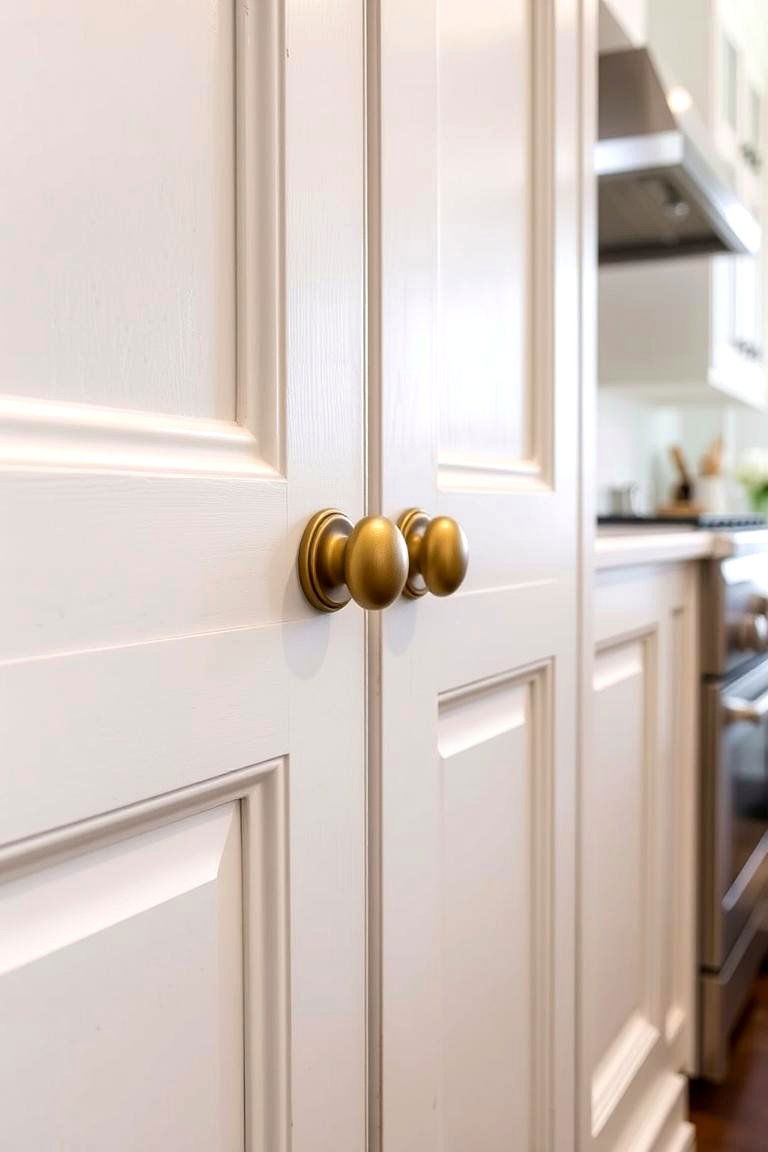
The often-overlooked details of decorative hardware can significantly impact the overall style of a traditional kitchen. Choosing knobs and pulls with classic designs, such as antique brass, oil-rubbed bronze, or polished nickel finishes, can enhance the traditional aesthetic. Details like intricate carvings, porcelain accents, or cup pulls can add a touch of vintage charm. Selecting hardware that complements the cabinet style and other design elements in the kitchen is crucial for creating a cohesive and polished look. Investing in quality decorative hardware is a simple yet effective way to elevate the traditional feel of the space.
14. Butler's Pantry
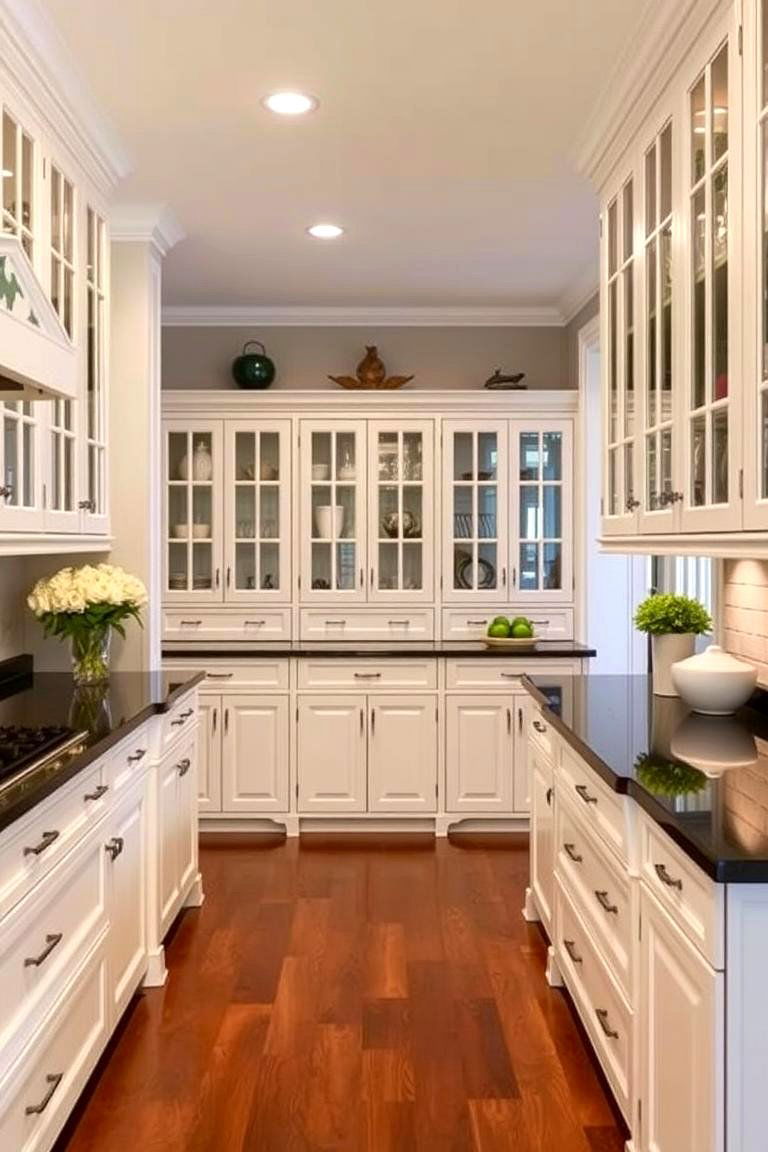
For those who desire extra storage and a dedicated space for serving and staging, a butler's pantry is a cherished feature in traditional kitchen design. Typically located between the kitchen and the dining room, this space often includes cabinetry, countertops, and sometimes even a small sink or wine refrigerator. A butler's pantry provides a convenient area for storing china, glassware, and serving pieces, as well as for preparing beverages or appetizers away from the main kitchen workspace. Incorporating a butler's pantry adds a touch of luxury and functionality to a traditional home.
15. Breakfast Nook
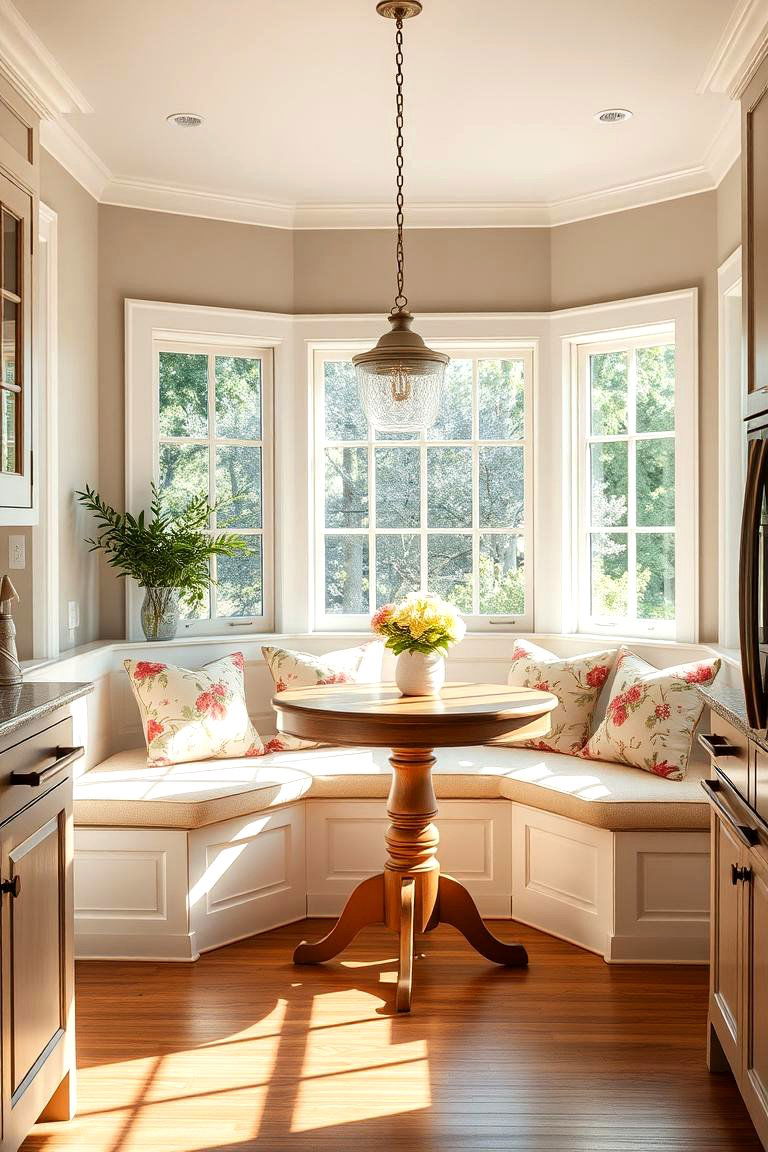
Envision a cozy and inviting breakfast nook as a charming addition to a traditional kitchen. This dedicated dining area, often nestled in a corner or by a window, provides a comfortable space for casual meals. Typically featuring a built-in banquette or a round table with chairs, a breakfast nook encourages a sense of intimacy and warmth. Natural light streaming in through nearby windows enhances the welcoming atmosphere. Creating a breakfast nook within a traditional kitchen adds both functionality and a touch of nostalgic charm, making it a delightful spot for starting the day.
16. Range Hood with Detailing
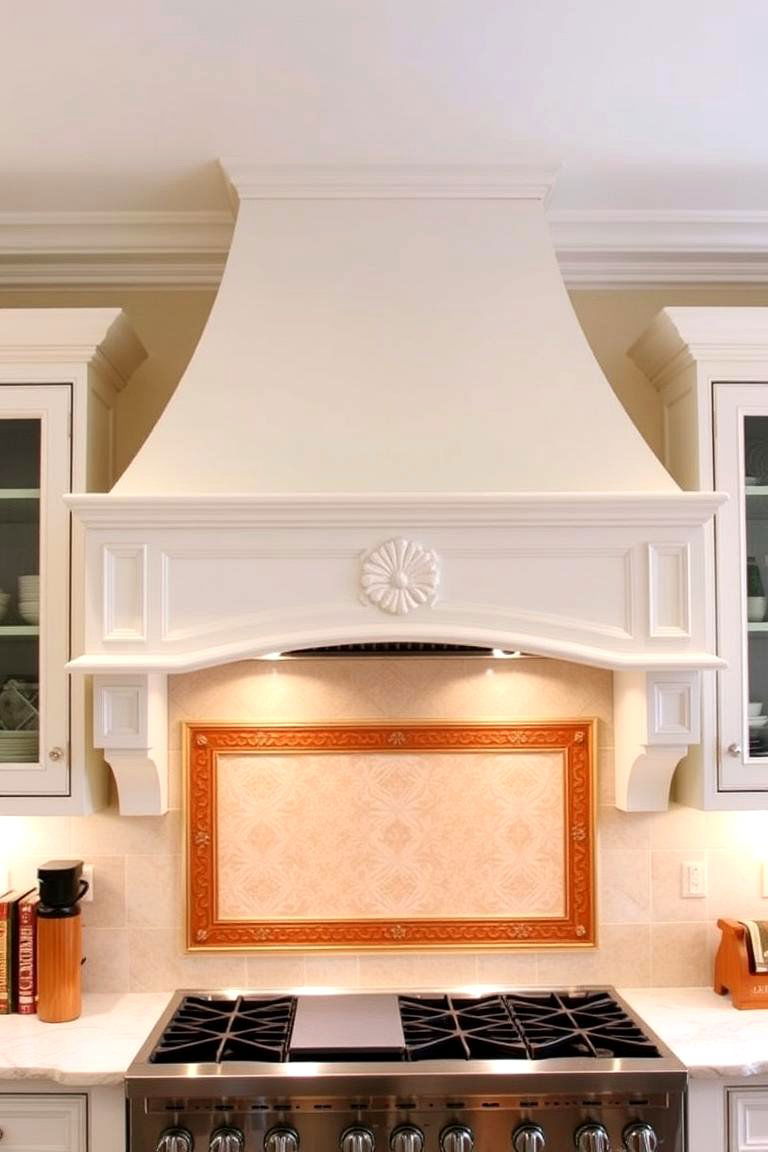
A focal point that combines function and style in a traditional kitchen is a well-designed range hood with detailing. Beyond its primary purpose of ventilation, a decorative range hood can significantly enhance the kitchen's aesthetic. Opting for a hood with classic lines, perhaps featuring wood accents, corbels, or a decorative chimney, can contribute to the traditional feel. The finish of the range hood, such as stainless steel, copper, or a custom paint color, can also be chosen to complement the overall design scheme. A thoughtfully selected range hood not only improves air quality but also serves as a prominent design element in a traditional kitchen.
17. Decorative Rug
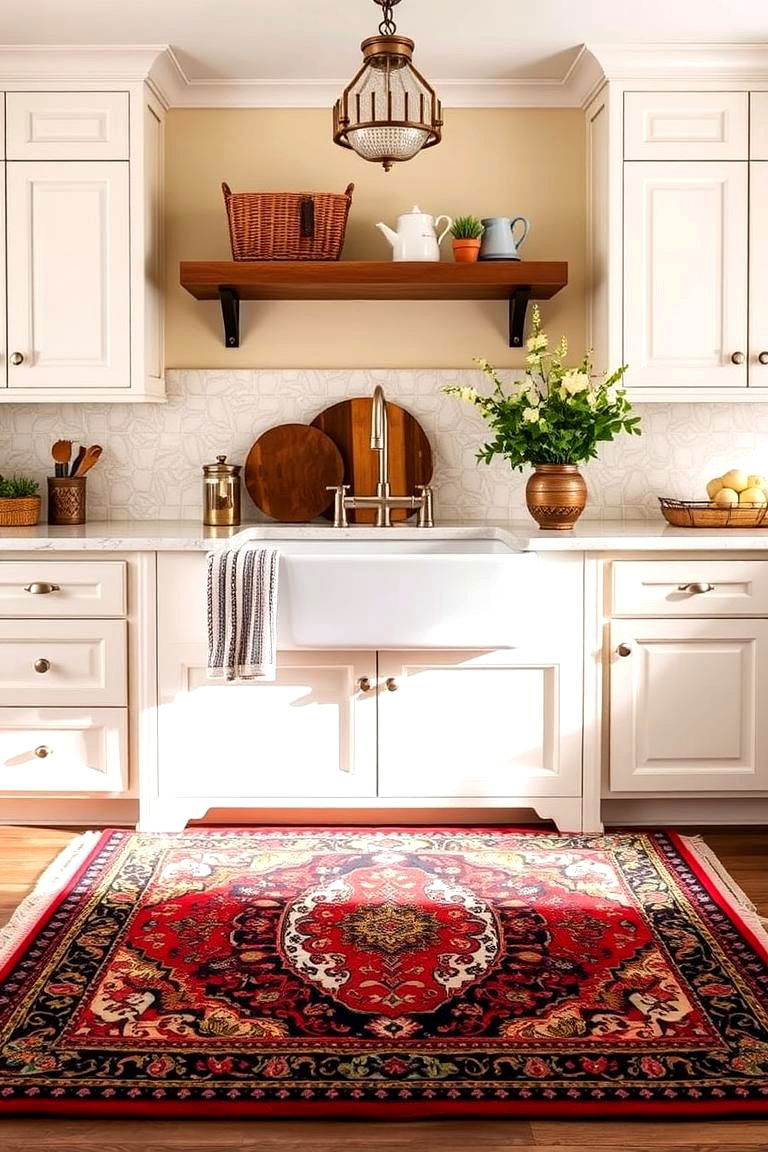
Bringing warmth, texture, and a touch of color to a traditional kitchen, a decorative rug can be a delightful addition. Choosing a rug with a classic pattern, such as Persian, Oriental, or a traditional floral design, can enhance the overall aesthetic. Consider materials like wool or natural fibers for durability and comfort. Placing a rug in front of the sink, under a breakfast table, or in a walkway can define different zones within the kitchen and add a layer of visual interest. A carefully selected decorative rug can contribute to the inviting and homey feel of a traditional kitchen.
18. Window Treatments (e.g., valances)
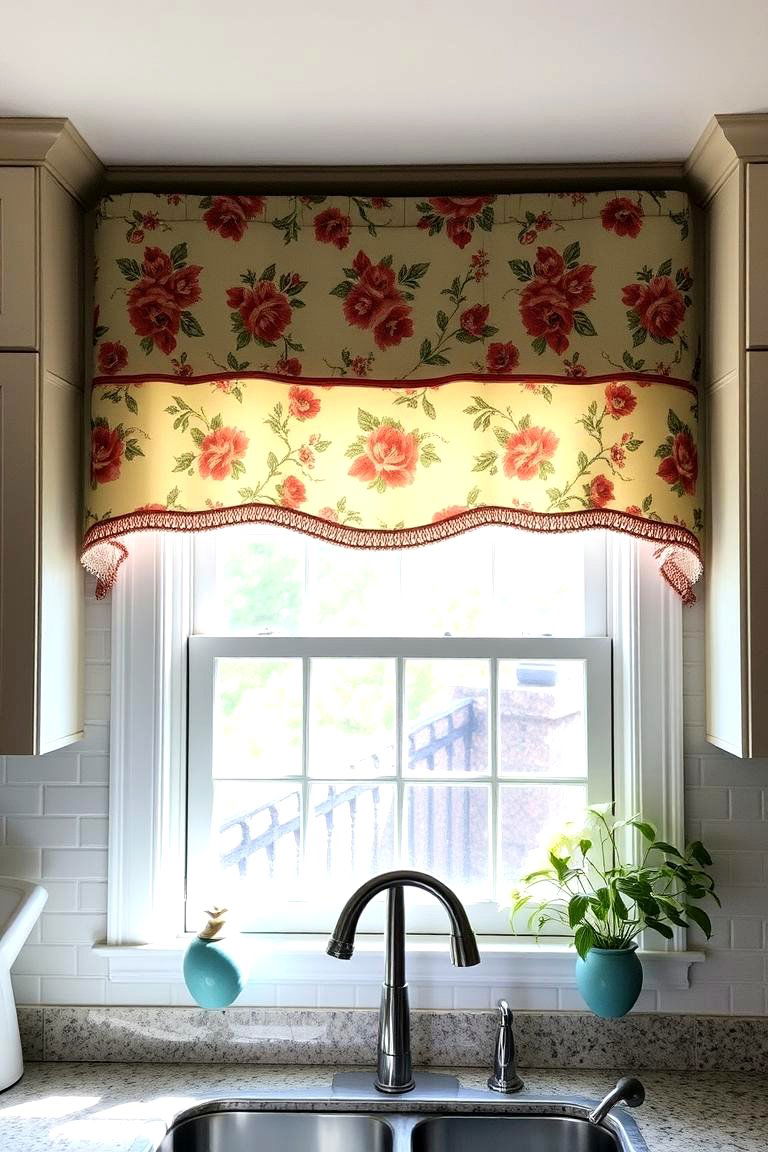
To soften the lines and add a touch of fabric and pattern, consider incorporating traditional window treatments like valances or curtains in a kitchen. These treatments can frame the windows beautifully and add a layer of privacy while allowing natural light to filter through. Choosing fabrics with classic patterns, such as florals, stripes, or checks, in colors that complement the kitchen's palette can enhance the traditional aesthetic. Simple yet elegant window treatments can contribute to the overall warmth and inviting atmosphere of a traditional kitchen.
19. Plate Racks
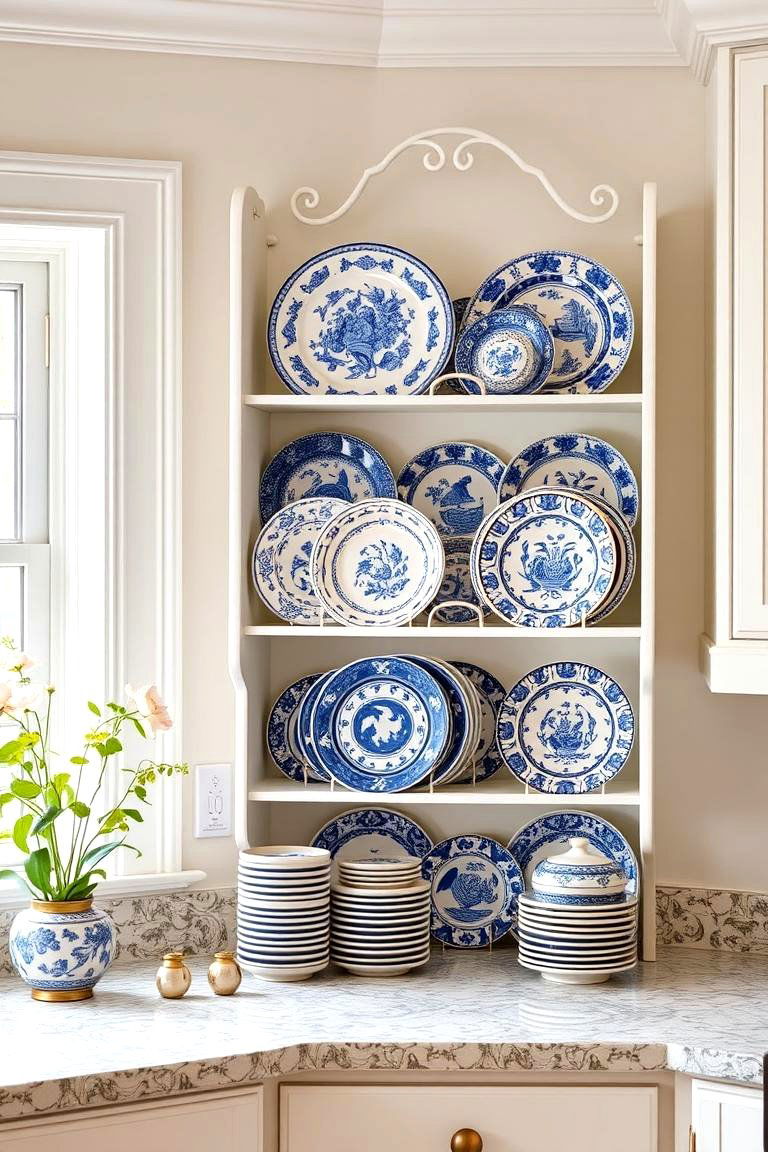
Adding a touch of vintage charm and practicality, plate racks can be a delightful feature in a traditional kitchen. These racks, often mounted on the wall or integrated into cabinetry, provide a stylish way to display and store frequently used plates. They not only keep dishes organized but also add a decorative element to the kitchen. Opting for plate racks in materials like wood or painted finishes can further enhance the traditional aesthetic. Incorporating plate racks is a simple yet effective way to add character and functionality to a traditional kitchen.
20. Utensil Crocks
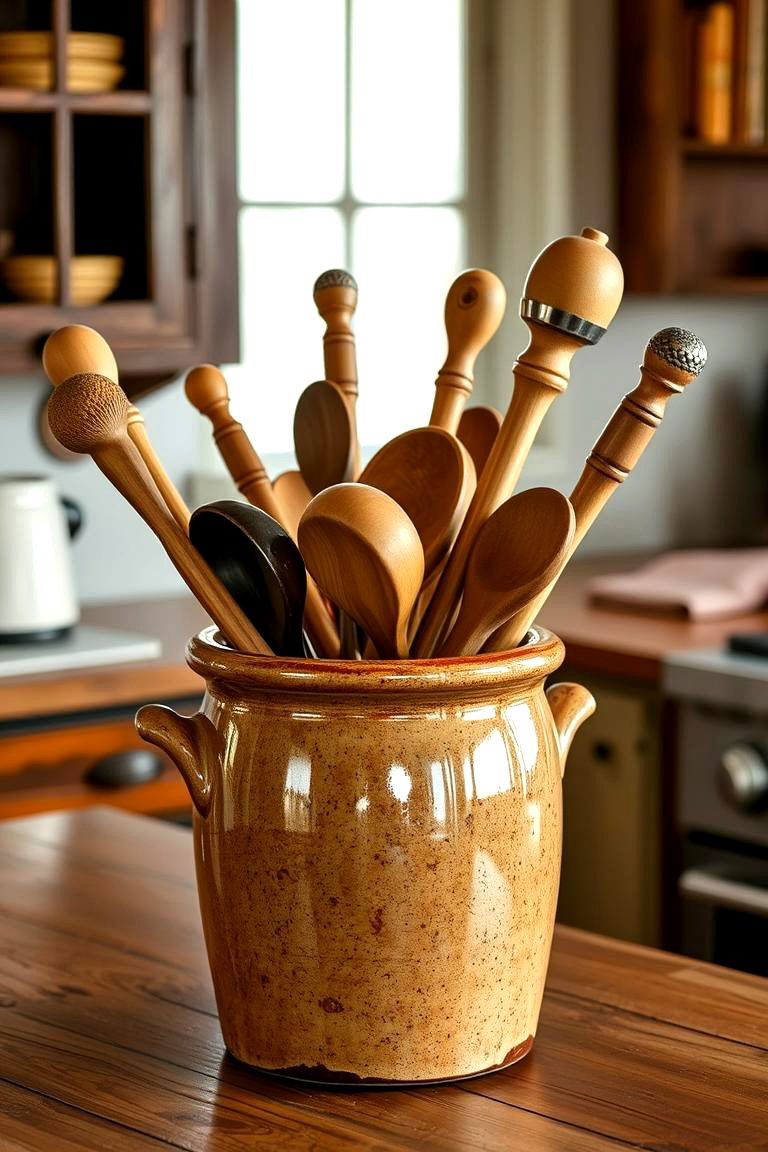
Simple and functional, utensil crocks are a staple in many traditional kitchens. Placing attractive ceramic or stoneware crocks on the countertop near the stove provides easy access to frequently used cooking utensils. These crocks not only serve a practical purpose but also add a touch of rustic charm to the kitchen decor. Choosing crocks in colors and styles that complement the overall aesthetic can further enhance the traditional feel. Utensil crocks are a small but significant detail that contributes to the warm and inviting atmosphere of a traditional kitchen.
21. Rolling Pin Display
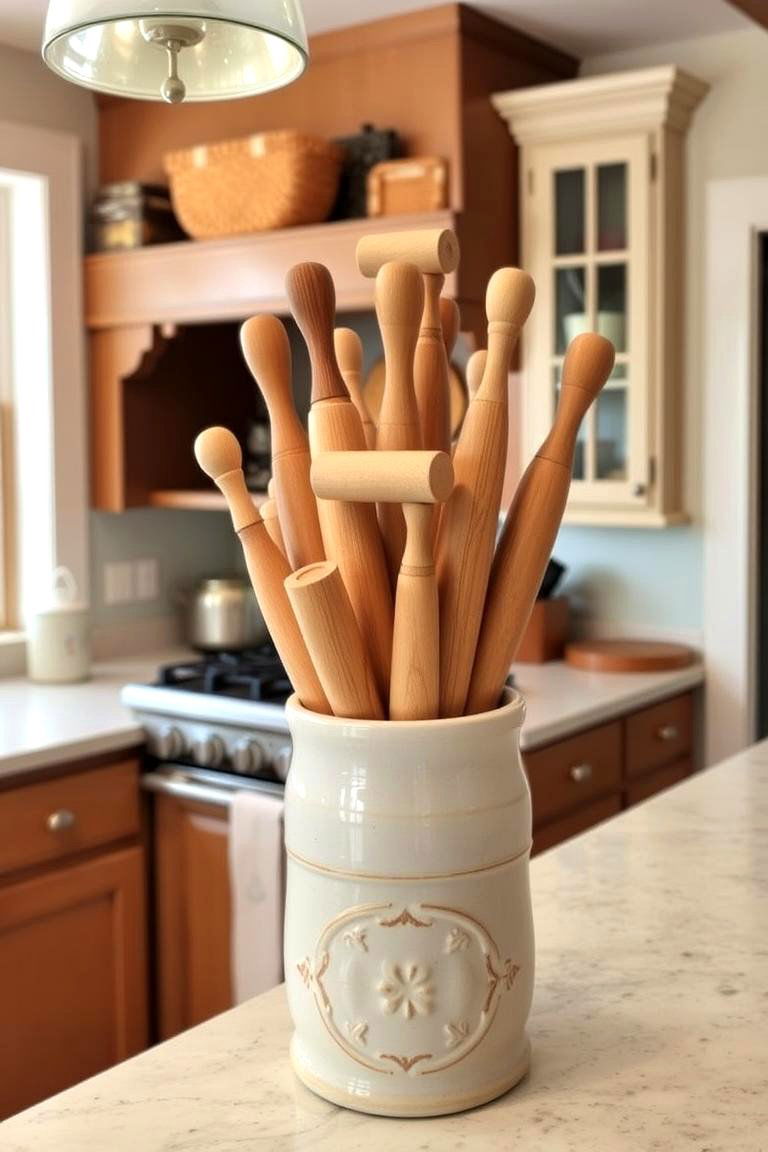
For baking enthusiasts, displaying rolling pins can be a charming and decorative touch in a traditional kitchen. A collection of rolling pins, perhaps in various sizes and materials, can be displayed in a decorative container or hung on a wall-mounted rack. This not only keeps them readily accessible for baking projects but also adds a touch of nostalgic appeal to the kitchen decor. A rolling pin display is a subtle yet personal way to enhance the warm and homey feel of a traditional kitchen.
22. Copper Accents

Introducing warm metallic tones, copper accents can add a touch of elegance and traditional charm to a kitchen. This can be achieved through copper cookware displayed on a rack, a copper sink or faucet, or even smaller decorative items like canisters or utensils. The rich, reddish-brown hue of copper complements a variety of color palettes and adds a sense of timeless sophistication. Incorporating copper accents is a stylish way to enhance the traditional aesthetic and create a warm and inviting atmosphere in the kitchen.
23. Built-in Hutch
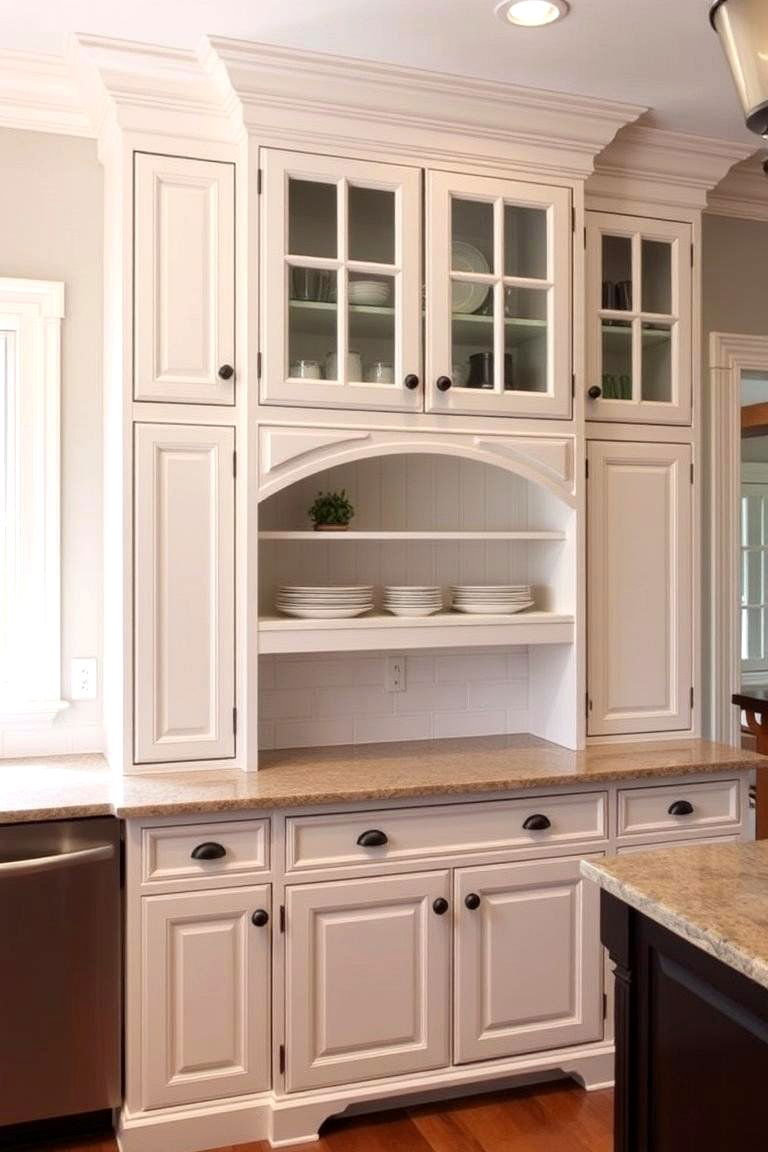
A classic piece of furniture that adds both storage and character to a traditional kitchen is a built-in hutch. Typically featuring a combination of drawers, cabinets, and open shelving, a hutch provides ample space for storing dishes, glassware, and other kitchen essentials. The open shelves offer an opportunity to display decorative items, adding a personal touch to the space. A built-in hutch can become a focal point in the kitchen, enhancing its traditional charm and providing valuable storage solutions.
24. Traditional Kitchen Table
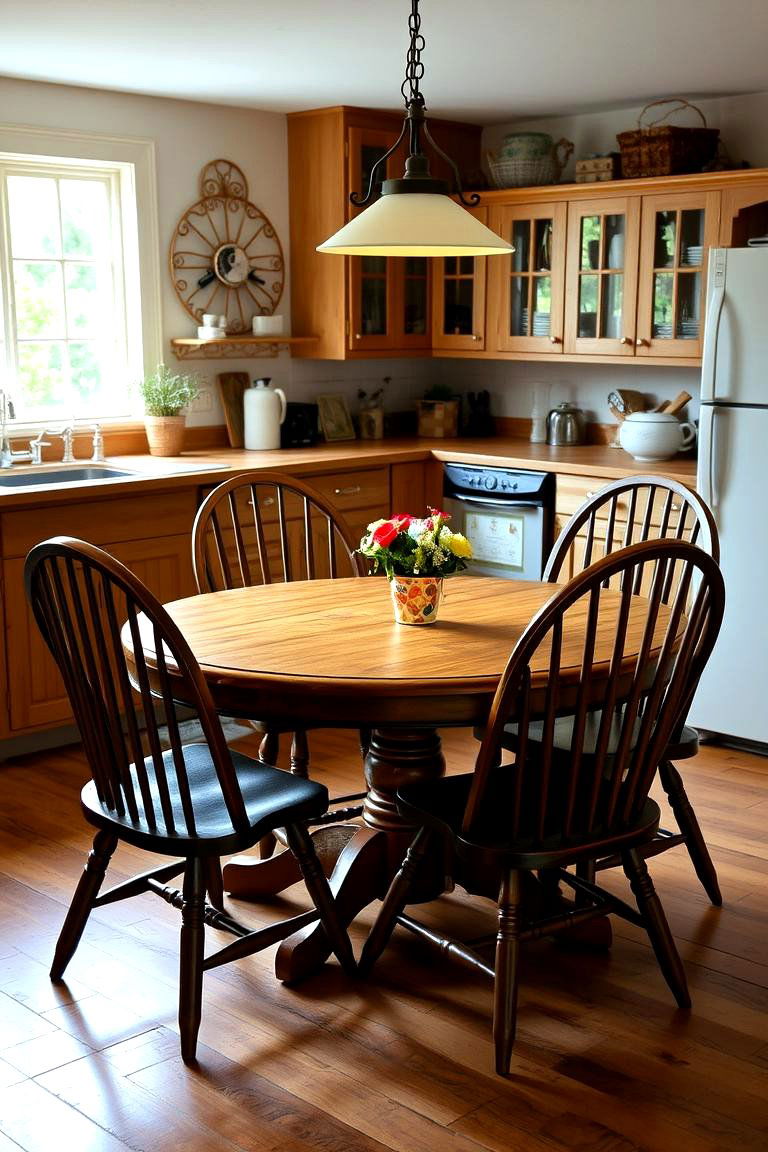
Finally, the heart of many traditional kitchens is a welcoming kitchen table. Opting for a sturdy wooden table, perhaps with a round or rectangular shape, creates a natural gathering spot for family meals and conversations. Pairing it with comfortable chairs, maybe with upholstered seats or a classic spindle design, enhances the inviting feel. A traditional kitchen table serves as both a functional dining area and a central element that contributes to the warm and homey atmosphere of the kitchen.
Conclusion:
From the enduring elegance of classic white cabinets to the inviting warmth of a traditional kitchen table, these ideas offer a glimpse into creating a culinary space that feels both timeless and functional. Incorporating elements like Shaker-style doors, farmhouse sinks, and hardwood flooring lays a foundation of classic design, while details such as decorative hardware, pendant lighting, and even a charming breakfast nook add layers of personality and practicality. Embracing these traditional kitchen ideas allows homeowners to craft a heart of the home that is not only beautiful but also a cherished space for creating memories and sharing meals for years to come.


